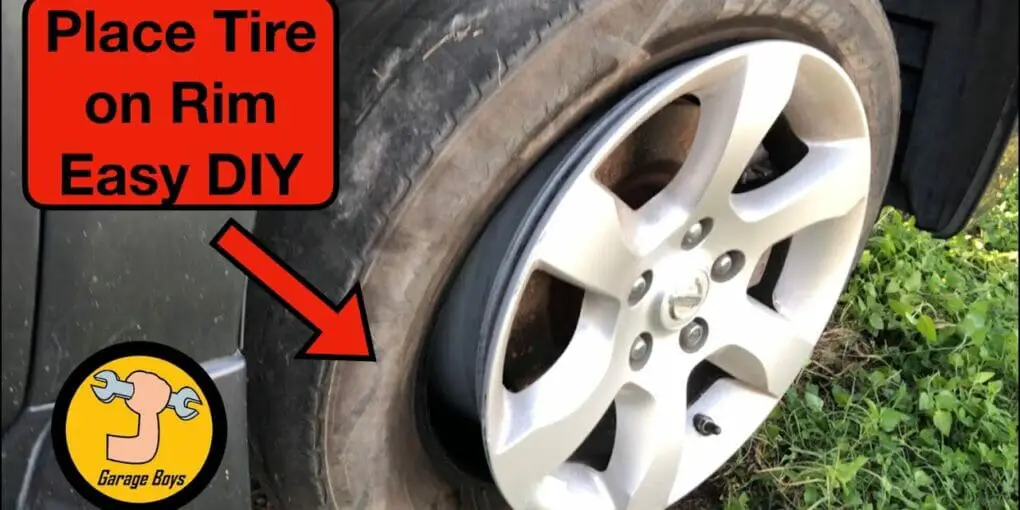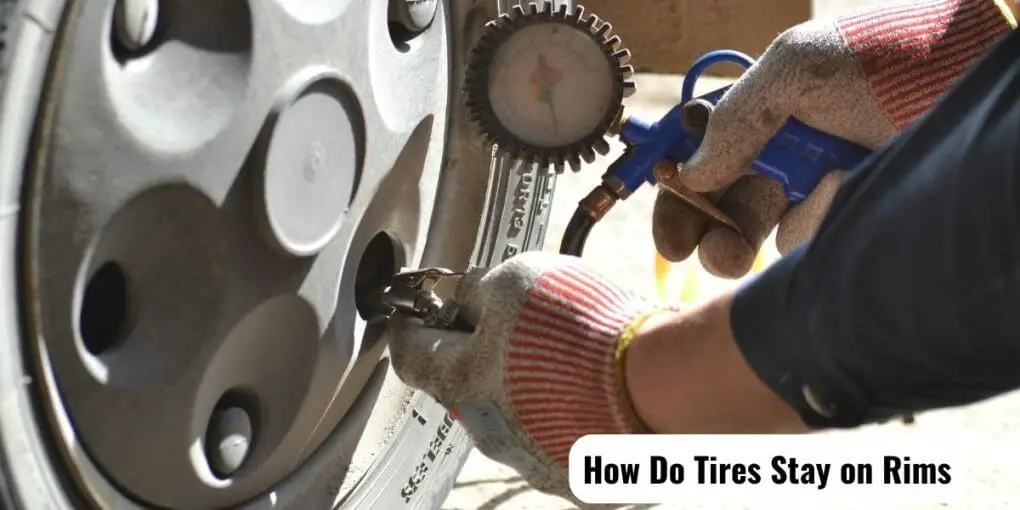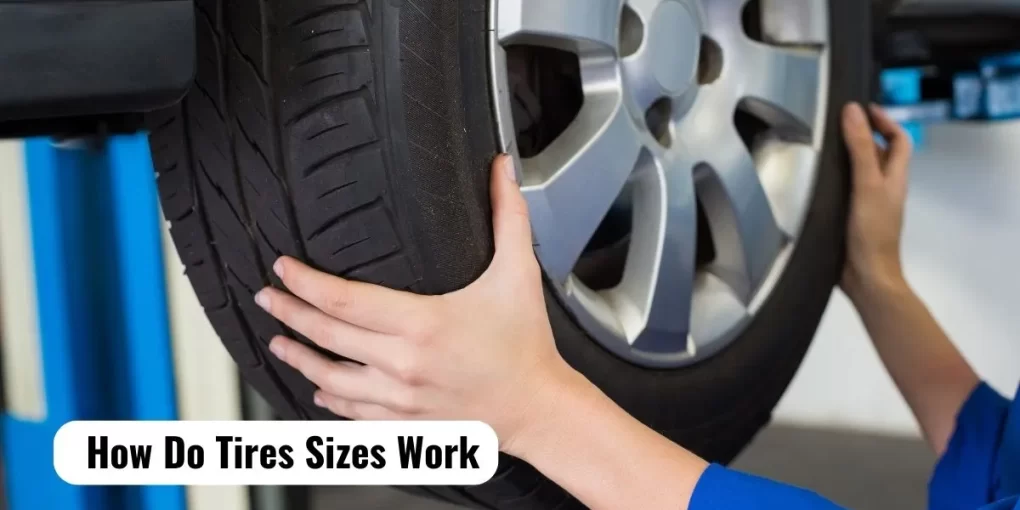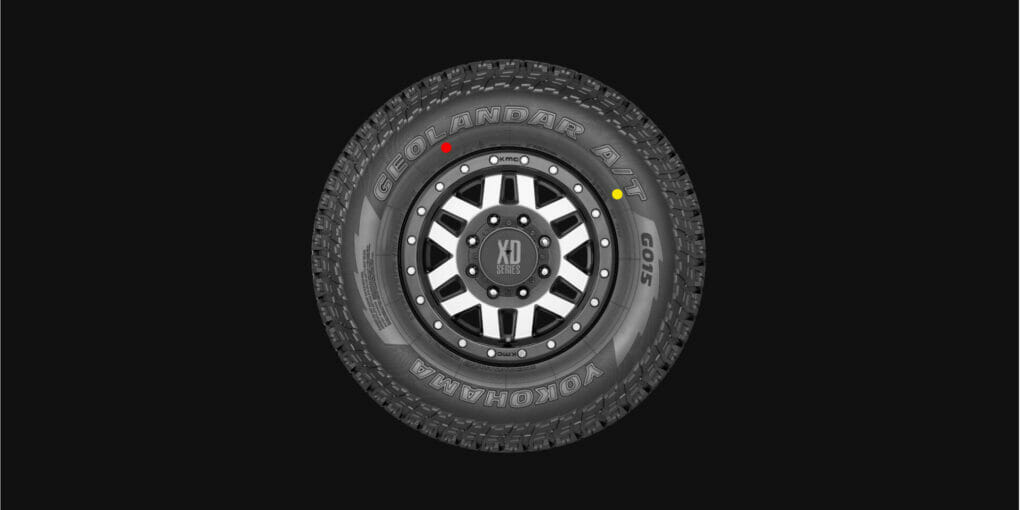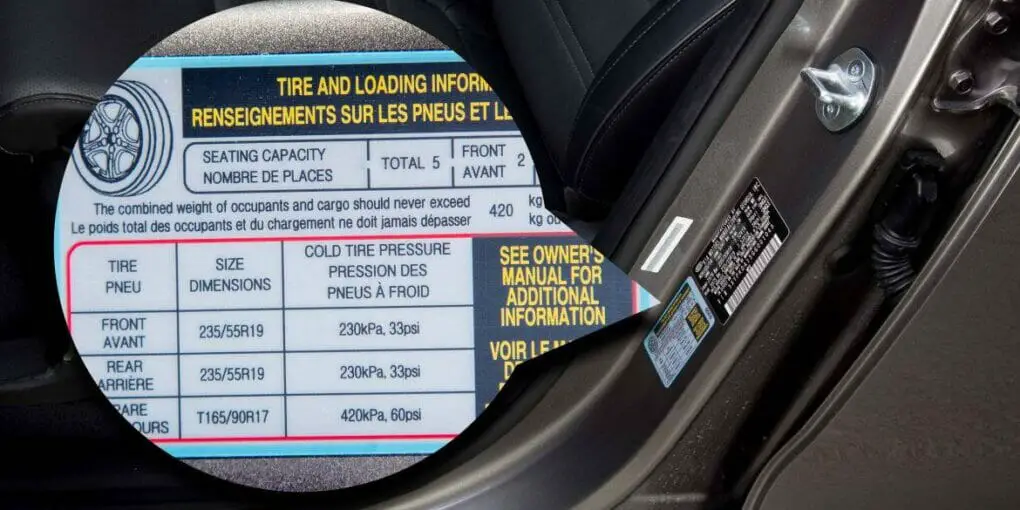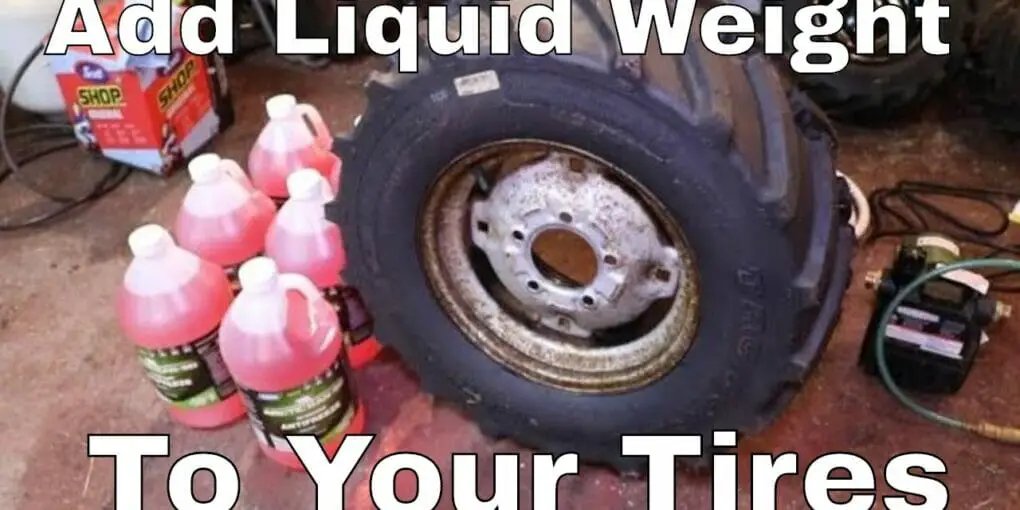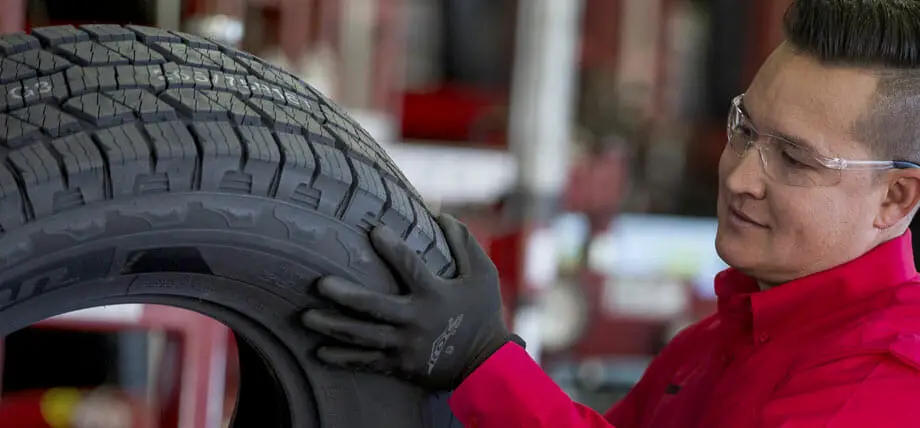- Home
- Blog
How Long Do Trailer Tires Last? The Truth Revealed
Tires are the only part of your trailer that touches the ground, so it’s important to choose ones that will last. Unfortunately, even the best tires won’t last forever. How long do trailer tires last?
It depends on a number of factors, including how often you use your trailer, what kind of terrain you’re driving on, and how well you maintain your tires. With proper care and maintenance, most trailer tires will last between three and five years.
Do you have a trailer that you use for hauling your RV or boat? If so, you know how important it is to have good tires. But how often should you replace them?
How long do trailer tires last? The answer to this question depends on a few factors, such as how often you use your trailer and what type of terrain you typically travel on. In general, though, most trailer tires will last for around 5 years with proper care.
Of course, if you only use your trailer a few times per year, then your tires may last even longer. Conversely, if you frequently haul your trailer on rough roads or in off-road conditions, then they may not last as long. No matter how long your trailer tires actually last, though, it’s always a good idea to inspect them regularly and be prepared to replace them when necessary. After all, new tires can mean the difference between a safe trip and an accident waiting to happen.
Table of Contents
How to Tell If Your Trailer Tires Are Bad
If you’re towing a trailer, it’s important to make sure that the tires are in good condition. Here are some signs that your trailer tires may be bad:
1. Cracks or splits in the sidewall: These can weaken the structure of the tire and cause a blowout.
2. Bulges or blisters on the surface of the tire: These indicate that the tire is overinflated or has been damaged and could also lead to a blowout.
3. Excessive tread wear: This could mean that the tire is overloaded or isn’t inflated properly, both of which can lead to premature failure.
4. Uneven wear patterns on the tread: This could be caused by misalignment of the axle, which puts extra stress on one side of the tire and leads to premature wear.
How Long Do Horse Trailer Tires Last
Horse trailer tires are one of the most important components of your rig. Not only do they provide a smooth ride for your horse, but they also keep your trailer safe and secure on the road. So, how long do horse trailer tires last?
The answer to this question depends on a number of factors, including the type of tire, how often you use your trailer, and how well you maintain your tires. Generally speaking, however, most horse trailer tires will last for several years with proper care. Some tips to help you get the most out of your horse trailer tires include:
Inspecting them regularly for signs of wear and tear. Keeping them inflated to the correct pressure. Rotating them every few months to ensure even wear. Avoid overloading your trailer. By following these simple tips, you can help extend the life of your horse trailer tires and keep your rig running smoothly mile after mile.
How Long Do Carlisle Trailer Tires Last
Carlisle trailer tires are one of the most popular choices for boat and RV owners. They offer a great combination of durability and affordability, making them a go-to option for many people. But how long do Carlisle trailer tires last?
On average, Carlisle trailer tires can last anywhere from three to five years. However, this depends on a number of factors, such as how often you use your trailer, what type of terrain you’re driving on, and how well you maintain your tires. If you take good care of your Carlisle trailer tires and don’t use them too often, they could easily last five years or more.
However, if you frequently travel on rough roads or don’t properly maintain your tires, they may only last a few years. No matter how long your Carlisle trailer tires last, it’s important to regularly check their condition and replace them when necessary. This will help ensure that your trailer is always safe to tow and that you don’t have any problems down the road.
How Long Do Goodyear Endurance Trailer Tires Last
If you’re in the market for a new set of trailer tires, you might be wondering how long Goodyear Endurance trailer tires last. Here’s what you need to know. Goodyear Endurance trailer tires are designed for long-lasting performance.
In fact, they’re backed by a six-year warranty. That means you can expect them to last for at least six years and likely longer. Of course, how long your particular set of Goodyear Endurance trailer tires lasts will depend on a number of factors, including how often you use your trailer and how well you maintain your tires.
But even if you don’t baby your tires, you can still expect them to last for many years before needing to be replaced. So, if you’re looking for a set of trailer tires that will give you years of trouble-free service, look no further than Goodyear Endurance trailer tires.
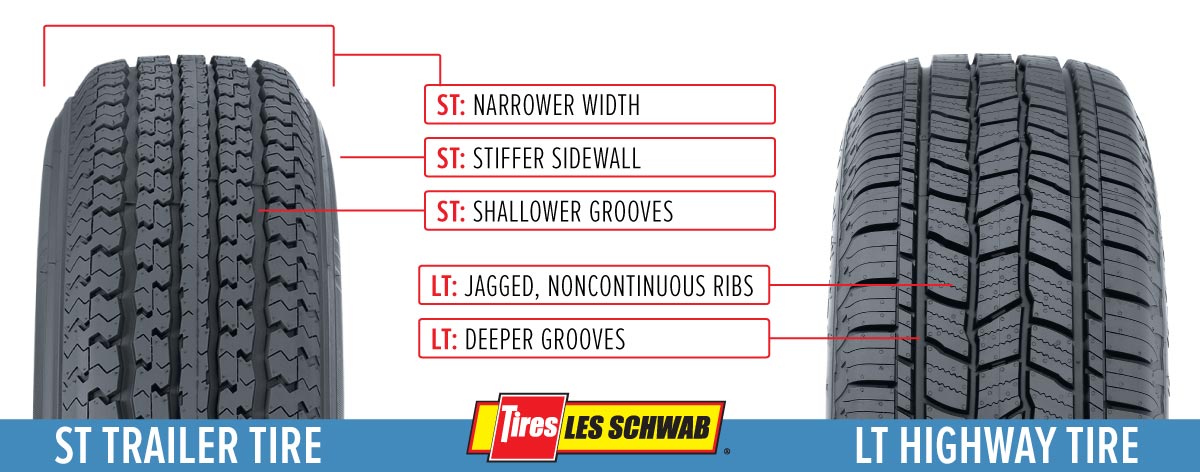
Credit: www.lesschwab.com
How Often Should Trailer Tires Be Changed?
It is generally recommended that trailer tires be changed every five years. However, if you frequently use your trailer and it experiences a lot of wear and tear, you may need to change the tires more often. You can check the condition of your tires by looking for signs of wear and tear, such as cracks or bald spots. If you’re not sure how old your tires are, you can check the date code stamped on the sidewall.
What is the Average Life of a Trailer Tire?
Most trailer tires have a maximum life expectancy of five to six years. However, the average life of a trailer tire depends on several factors, including how often it is used, what type of terrain it is used on, and how well it is maintained.
For example, if a trailer tire is used frequently on rough terrain, it will likely need to be replaced more often than one that is only used occasionally on smooth roads. Proper maintenance is also essential to prolonging the life of a trailer tire. This includes regularly checking the air pressure and inspecting the tread for wear.
How Do You Know When Your Trailer Tires Need to Be Replaced?
It’s important to regularly check your trailer tires for wear and tear, as they can degrade quickly if not properly maintained. There are a few telltale signs that it’s time to replace your trailer tires:
1. The tread is worn down: If the tread on your trailer tires is significantly worn down, it’s time to get new ones. This is because the tread helps provide traction and grip, so without it, you could have difficulty stopping or controlling your trailer. Use a tire depth gauge to check how much tread is left on each tire; if it’s less than 1/16 of an inch, it’s time for a replacement.
2. The sidewalls are cracked or damaged: The sidewalls play an important role in supporting the weight of your trailer and protecting the inner structure of the tire from damage. If you notice any cracks or cuts in the sidewalls, it means the tire is no longer able to adequately support the weight of your trailer and should be replaced immediately.
3. There is excessive vibration when driving: If you feel excessive vibration coming from your trailer tires while driving, this could be a sign that they are unbalanced or wearing unevenly. Unbalanced tires can cause premature wear and tear and make steering difficult, so it’s best to have them checked out by a professional as soon as possible.
4 . The wheels are bent or damaged: Bent or damaged wheels can cause improper contact between the tire and road surface, resulting in decreased performance as well as increased wear and tear on both the tires and suspension components.
If you notice any damage to your wheels, have them inspected by a qualified technician right away.
When to Replace Trailer Tires
Why Do Trailer Tires Wear Out So Fast?
Trailer tires are designed to carry a heavy load over long distances, which can put a lot of wear and tear on the tires. The weight of the trailer itself, plus any cargo that is being carried, can cause the tires to wear down quickly. Additionally, trailer tires are often used on rough terrain, which can also contribute to tire wear.
Frequently Asked Questions (FAQs)
What Factors Determine The Lifespan Of Trailer Tires?
The lifespan of trailer tires can be influenced by several factors, including the quality of the tires, frequency of use, driving conditions, weather exposure, load weight, tire pressure, and maintenance practices. Regular inspections and proper care can greatly extend the life of trailer tires.
What Are The Signs That My Trailer Tires Need To Be Replaced?
Signs that your trailer tires need to be replaced include visible tread wear, cracks or bulges on the sidewalls, constant pressure loss, uneven wear patterns, or any form of visible damage. If you notice any of these signs, it’s best to replace your tires immediately to avoid a potential blowout or accident.
How Can I Extend The Lifespan Of My Trailer Tires?
To extend the lifespan of your trailer tires, maintain proper tire pressure, regularly inspect tires for damage, make sure tires are properly balanced, observe load capacity limits, and protect tires from harmful UV rays when the trailer is not in use. Regular maintenance and proper storage can greatly extend the life of your trailer tires.
Is It Safe To Use A Spare Tire For A Long Time?
Spare tires are not designed for long-term use and should be replaced as soon as possible. Continuous use of a spare tire can compromise your safety as they are not built for high-speed driving or carrying heavy loads.
Can I Mix Different Types Of Tires On My Trailer?
It’s not recommended to mix different types of tires on your trailer. Using the same type of tires ensures even wear and optimal performance. Mixing different types of tires can lead to handling issues and increased wear.
How Does Overloading Affect My Trailer Tires?
Overloading puts extra pressure on your trailer tires, leading to excessive heat build-up that can cause blowouts. Overloading also accelerates tread wear and can affect the handling and braking ability of your trailer.
What’s The Proper Way To Store Trailer Tires When Not In Use?
When not in use, trailer tires should be stored in a cool, dry place away from direct sunlight. Tires should be cleaned and inspected before storage. If possible, store the trailer on blocks to reduce stress on the tires.
How Does Tire Pressure Affect The Lifespan Of My Trailer Tires?
Maintaining the correct tire pressure is crucial for the lifespan of your trailer tires. Under-inflation causes excessive heat buildup and internal damage, while over-inflation can make the tires more susceptible to punctures and uneven wear. Check your tire pressure regularly and before every trip.
Is It Necessary To Balance Trailer Tires?
While not always necessary, balancing trailer tires can help extend their lifespan and improve your trailer’s performance. Unbalanced tires can cause uneven wear, vibrations, and increased strain on your trailer’s suspension.
Conclusion
Trailer tires are designed to last for a long time, but they will eventually need to be replaced. The average lifespan of a trailer tire is around five years. However, this can vary depending on how often the trailer is used and how well it is maintained. If you take good care of your trailer tires, they can last for much longer than five years.
How Long Does It Take to Change Tires off Rims [Updated]
Helpful tips on how long it takes to change a tire, including what you need and helpful advice. If you’ve never changed a tire before, it’s important to know that it doesn’t have to be a difficult or time-consuming task. In fact, with the right tools and some practice, changing a tire can be relatively easy.
Of course, the amount of time it will take to change a tire will vary depending on the type of vehicle you have and your level of expertise. However, in general, changing a tire should take no more than 30 minutes.
If you’ve ever wondered how long it takes to change a tire off its rim, the answer is: it depends. The process can be anywhere from quick and easy to time-consuming and difficult, depending on the type of tire and rim you have. Here’s a look at what you can expect when changing tires off rims.
How to take a tire off the rim really easy / How to put a tire on a rim
How Long Does a 4 Tire Change Take
If you’re like most people, you probably don’t think about how long it takes to change your car’s tires. After all, it’s not something that you have to do very often. However, if you find yourself in need of a tire change, it’s important to know how long the process will take.
The good news is that changing all four tires isn’t a particularly time-consuming task. In fact, most mechanics say that it should only take about an hour from start to finish. Of course, this can vary depending on the make and model of your car as well as the skill level of the person doing the work.
That being said, there are a few things that you can do to help make sure that the job gets done quickly and efficiently. First, be sure to have all of the necessary tools on hand before starting. This includes a jack, lug wrench, and spare tire.
Second, if possible, park your car on a level surface so that the mechanic doesn’t have to struggle with lifting one side higher than the other. Finally, if you’re comfortable doing so, loosen the lug nuts slightly before letting someone else take over – this will save valuable time during the actual tire-changing process.So there you have it – everything you need to know about getting your car’s tires changed quickly and without any headaches!

Credit: www.youtube.com
How Long Does It Take to Change 4 Tires off Rims?
It takes about an hour to change 4 tires off rims. You will need a few basic tools, including a jack and a lug wrench. It is important to have the right size lug wrench so that you can properly loosen and tighten the lug nuts.
You should also have a tire iron to help remove the old tires from the rims. Once you have all of your tools, you will need to jack up the car so that you can work on the tires. Start by loosening the lug nuts on one tire, and then use the tire iron to remove it from the rim.
Repeat this process for each of the other three tires. To put on new tires, simply reverse this process. First, place the new tire on the rim and then hand-tighten the lug nuts before lowering the car back down onto all four tires.
Finally, use your lug wrench to fully tighten each of the lug nuts.
How Much Does It Cost to Switch Out Tires on Rims?
It can cost anywhere from $40 to $200+ to switch out tires on rims, depending on the type of vehicle you have and where you take it to get the work done.If you have a standard passenger car or light truck, most tire shops will charge around $40-$60 per tire to mount and dismount them from your rims. They may also charge a small fee (usually $5-$15) for each valve stem that needs to be replaced.
So, if you need all four tires switched out, you’re looking at a bill of around $160-$240.However, if you have a larger vehicle like an SUV or van, the costs can go up significantly. Many tire shops will charge $75-$100 per tire for mounting and dismounting, and the fees for valve stems can also be much higher (up to $30 each).
So, switching out all four tires on a larger vehicle could cost you upwards of $400+.Of course, these are just general estimates – the best way to get an accurate price quote is to take your vehicle to a few different tire shops and see what they charge.
How Long Does It Take to Change 4 Tyres?
Assuming you have all the necessary tools, it should take no more than 30 minutes to change 4 tyres. Here’s a step-by-step guide:1. Park your car on a level surface and engage the parking brake.
Place blocks behind the back wheels to prevent the car from rolling while you’re working.2. Loosen each of the lug nuts on the wheels that you’ll be changing using a lug wrench. Do not remove them completely – just loosen them enough so that they can be removed by hand later on.
3. Lift each wheel off of the ground one at a time, starting with either the front or rear axle (it doesn’t really matter which). Use a jack to support each wheel as you remove it.4. Once the wheel is off, remove the old tyre and put the new one in its place, being careful not to damage the rim of the wheel.
Make sure that the new tyre is properly seated on the bead before moving on to Step 5.5..Replace each lug nut and tighten them by hand as much as possible before using your lug wrench to give them a final tightening (be sure not to overdo it or you could strip out the threads).
How Long Does It Take a Professional to Change a Tire?
It takes a professional about 15 minutes to change a tire.
Conclusion
It takes about an hour to change tires off rims, including the time it takes to find the right tools and gather everything you need. You’ll need a few basic tools, like a socket wrench set, and some patience. Once you have everything ready, it’s just a matter of following directions and taking your time.
With a little practice, you’ll be able to do it in no time!
Unraveling the Mystery: How Do Tires Attach to Rims
Tires are an essential component of any vehicle, and they play a crucial role in ensuring a safe and comfortable ride. However, many people may not be aware of how tires attach to rims. The process of attaching tires to rims is a critical step in the assembly of any vehicle, and it requires precision and attention to detail.
In this article, we will explore how tires attach to rims and the different methods used to secure them. We will also discuss the importance of proper tire and rim installation and the potential risks associated with improper installation. Understanding how tires attach to rims is not only important for vehicle owners but also for those who work in the automotive industry, including mechanics, tire technicians, and engineers. So, let’s dive in and explore the fascinating world of tire and rim installation.
Tires attach to rims in one of two ways: with a bead or with a rim band. A bead is a hoop of steel or other metal that fits around the outside edge of the wheel and holds the tire in place. A rim band is a strip of metal or other material that goes around the inside edge of the wheel and also holds the tire in place.
How to Put a Tire Back on the Rim by Hand
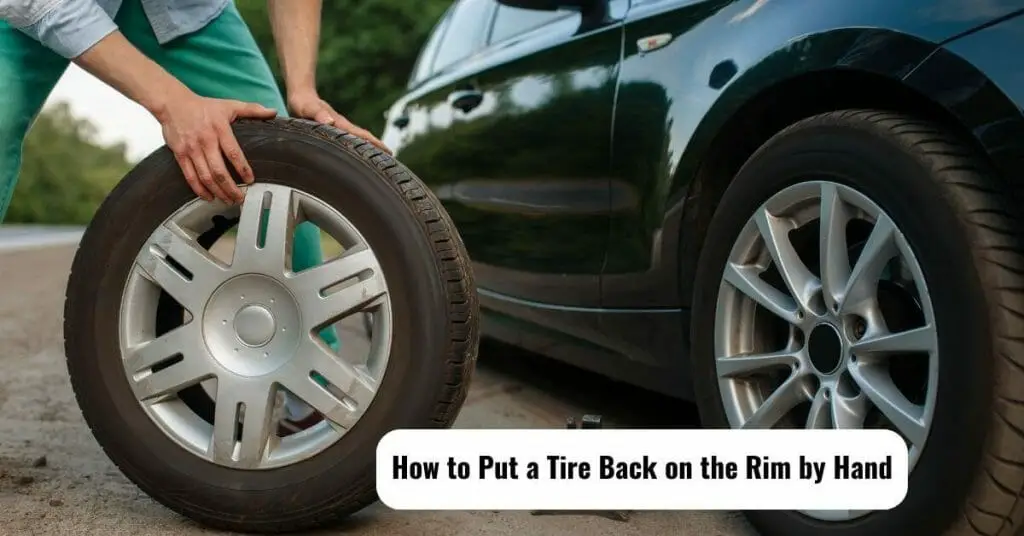
If you’ve ever had a flat tire, you know the feeling of frustration that comes with it. Not only do you have to deal with the inconvenience of having a tire that needs to be fixed, but you also have to worry about how you’re going to get it fixed. If you don’t have a spare tire or can’t afford to call a tow truck, you may be wondering how you’re going to put your tire back on the rim by hand.
Luckily, it’s not as difficult as it may seem. With a little patience and some elbow grease, you can get your tire back on the rim and be on your way in no time. Here’s what you need to do:
Start by taking off the hubcap or wheel cover. This will give you access to the bolts that hold the tire in place.
Use a wrench to loosen the bolts until they are loose enough to remove by hand. Be careful not to remove them completely – just loosen them so that they can be removed easily later on.
Once the bolts are loosened, gently tap around the edge of the tire with a mallet or other tool until it pops off of the rim. You may need someone else to help guide it off if it’s being stubborn.
Take a look at both the rim and the tire for any damage or debris that may be present. If everything looks good, go ahead and start putting your new Tire onto The Rim. Line up one side of The Tire with The Rim, then work your way around until The Tire is fully seated on The Rim.
It may take some wiggling and maneuvering, but eventually, The Tire will pop into place. Make sure That It’s seated evenly all The Way around before proceeding To Step 5! sk5!
5! Once The Tire Is In Place, Replace each Of The Bolts One At A Time And Tighten Them Down With Your Wrench. Start In The Middle And Work Your Way Outward In A Star Pattern Until All Of The Bolts Are snugged Up Nice And Tight!
6!6!Now That All Of The Bolts Are tightened Down, GiveThe Wheel A Spin To Make Sure That It’s Seated Properly OnThe Hub, Then PutThe Hubcap Or Wheel Cover Back OnAnd You ‘Re Ready To Go!
How to Put Tire Back on Rim Bike
If you’ve ever had a flat tire on your bike, you know how frustrating it can be. You’re either stuck walking your bike home or if you’re lucky enough to have a spare tire with you, changing the tire can be a real pain. But there’s an easy way to change a tire that doesn’t require taking the wheel off the bike and that’s by putting the tire back on the rim.
Here’s how to do it:
Start by loosening the bolts that hold the wheel in place. You don’t need to remove them completely, just loosen them enough so that you can slide the wheel out.
Once the wheel is out, take a look at the inside of the tire. You’ll see where it sits on the rim and how it’s held in place by small metal wires (called “spokes”).
Carefully pull one side of the tire away from the rim, being careful not to damage either one. Then do the same on the other side until the entire tire is free from the rim.
Take your new tube and insert it into one side The most difficult part of this process is getting air into your new tube – which we’ll cover next time! For now, simply put some air into The easiest way to do this is with an air compressor or a hand pump designed for bicycle tires will work as well).
Put enough air into 5-10 PSI should be fine). If all goes according to plan, your new tube should seat itself properly inside The final step is re-installing The wheel back onto your bicycle frame. Align The dropouts (the slots on The frame where The axle goes through) with The axle, then slide The axle through until both sides are seated properly.
Once everything looks lined up, begin tightening down each bolt, working in a crisscross pattern (. e . , tighten down bolt 1 halfway, then bolt 2 halfway, etc .) until all four bolts are tight. That’s it!
Mount Tire on Rim Near Me
If you’re looking to mount a tire on a rim near you, there are a few things you’ll need to know. First, it’s important to find a reputable shop that can do the job correctly. Many tire shops will offer this service, but not all of them have the proper equipment or experience.
Make sure to ask around and get recommendations before taking your vehicle in. Once you’ve found a good shop, they’ll usually start by mounting the tire onto the rim using a machine. This process can vary depending on the size and type of tire, but generally speaking, it involves inflating the tire and then spinning it on the machine until it’s seated correctly on the rim.
After the tire is mounted, the next step is to balance it. This ensures that the weight of the tire is evenly distributed so that it rolls smoothly down the road. The balancing process usually involves adding weights to either side of the wheel until it’s perfectly balanced.
Finally, once everything is checked and double-checked, your new tires should be ready to go! Mounting tires isn’t always easy, but with a little bit of research and patience, you should be able to find a reputable shop near you that can handle the job quickly and efficiently.
How to Mount And Balance Tires Yourself
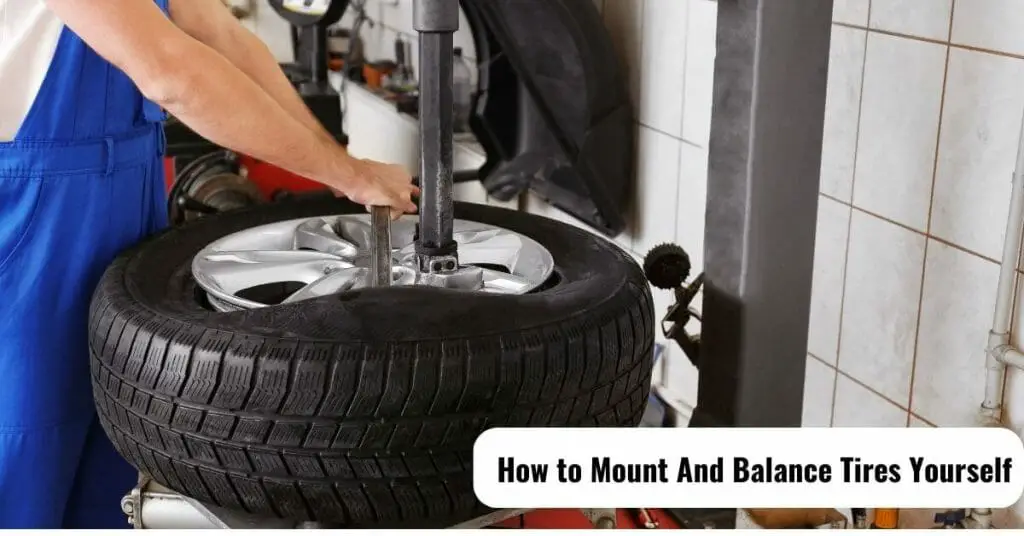
If you’re a car owner, it’s important to know how to mount and balance your own tires. This way, you can avoid overspending on tire mounting and balancing services at a shop. Plus, it’s not as difficult as it may seem!
Here’s a step-by-step guide on how to do it yourself:
Make sure you have the right tools. You’ll need an air compressor, an impact wrench, and a tire balancer. If you don’t have access to an air compressor, you can borrow one from a friend or neighbor.
Start by removing the old tires from your car. Use the impact wrench to loosen the lug nuts, then carefully pull the tire off of the wheel. Repeat this process for all four tires.
Once the old tires are off, clean the wheels with soapy water and a rag. This will help ensure that the new tires adhere properly to the wheels.
Now it’s time to mount the new tires onto the wheels. Again, use the impact wrench to loosely secure the lug nuts onto each wheel. Then fit each tire onto its respective wheel and hand-tighten each lug nut until it’s snug against the tire bead. At this point, don’t worry about making them super tight – we’ll do that later.
The next step is to inflate each tire until it reaches its recommended pressure level (you can find this information on either side of your tire). Once all four tires are inflated, use your tire balancer to check for any imbalances. If there are any imbalances, add weight accordingly until they’re balanced out.
Finally, use your impact wrench to tighten each lug nut down until it’s finger-tight, then give each nut an extra 1/4 – 1/2 turn with the wrench. That’s it – you’re done!
How to Mount a Small Tire on a Rim
Assuming you have the tools and materials needed, it is not difficult to mount a small tire on a rim. The process is as follows:
First, make sure the tire is clean and free of any debris.
Next, use a bead breaker to loosen the beads of the tire from the rim.
Once the beads are loose, carefully remove the tire from the rim. Take care not to damage either the tire or the rim in this process.
Now that the tire is off of the rim, it is time to prepare it for mounting onto a new rim. If there is any old glue or sealant on the bead of the tire, be sure to remove it completely before proceeding.
5a. For tubeless tires, apply a generous amount of fresh sealant around both beads of the tire before mounting them onto the new rim.
5b. For tires with inner tubes, inflate both tubes and then insert them into Tire so that the tube lies flat between the bead and sidewall without being pinched anywhere inside the Tire cavity; reinflate the tube until firm but pliable (do not over-inflate).
6a. For tubeless tires: Seat one bead at a time by hand while simultaneously adding air pressure through the valve stem until Bead “snaps” into place atop Rim’s drop center well all way around the circumference (360 degrees).
OR 6b. For tires with inner tubes: Seat first Bead by hand while simultaneously adding air pressure through the valve stem until Bead “snaps” into place atopRim’s drop center well all way around the circumference (360 degrees); repeat for second Bead on the opposite side of Tire/Tube assembly 7 Using either method described in Step 5 above (with or without fresh Sealant), finish seating both Beads all way around the circumference (360 degrees) while maintaining air pressure in Valve stem; check that no gaps exist between Bead and Rim well anywhere around the entire circumference. If necessary, add more air pressure until no gaps remain anywhere.
Remove the Valve core using the Valve tool provided with most Pump head attachments; allow the remaining air pressure to escape slowly through the now open valve hole.
How Does a Tire Connect to a Rim?
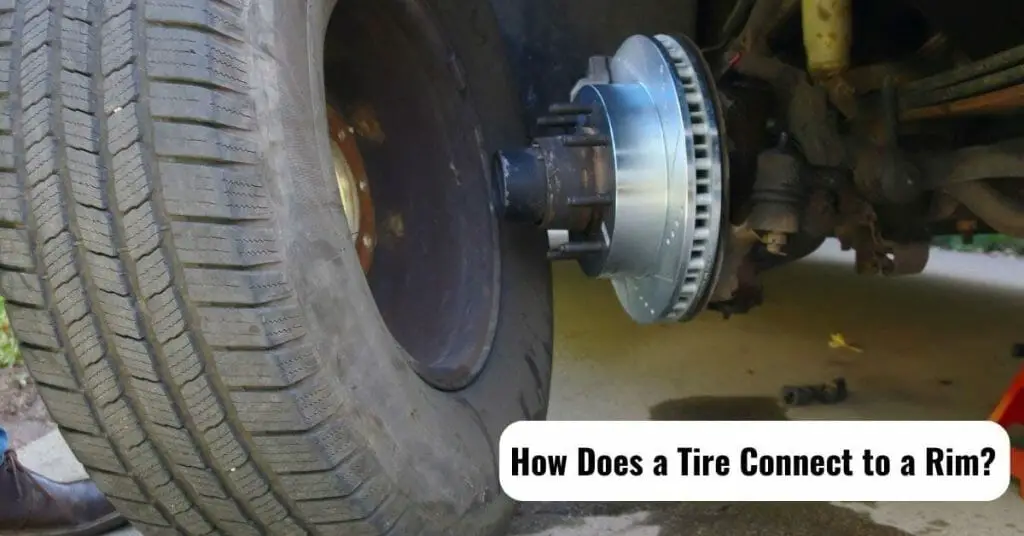
The connection between a tire and a rim is crucial to the function of a vehicle. The two parts work together to provide support for the weight of the vehicle, as well as grip on the road surface. There are several different ways that tires can be connected to rims, but the most common method is by using tire beads.
Tire beads are made from a variety of materials, but they all serve the same purpose. They are designed to fit snugly around the rim of a wheel and hold the tire in place. Most tire beads are made from metal or rubber, and they can either be rigid or flexible.
Rigid tire beads are typically made from steel or aluminum, and they’re often used on heavy-duty vehicles like trucks and buses. Flexible tire beads are usually made from rubber, and they’re often used on lighter vehicles like cars and motorcycles. No matter what material they’re made from, all tire beads have one thing in common: They need to be strong enough to keep the tire securely attached to the rim under all conditions.
That means that when you’re driving down the highway at high speeds, your tires will stay firmly in place even if you hit a pothole or make a sharp turn. So how do tire beads actually work? When you inflate a tire, the air pressure inside forces the bead against the wall of the rim.
This creates a seal that prevents air from escaping through gaps between the bead and rim. The bead also needs to be able to grip something so it doesn’t just slip out of place when you start driving. To do this, most bead designs include some kind of tread pattern that helps keep them locked into position.
So there you have it: That’s how tires connect to rims! The next time you take a close look at your wheels pay attention to those little details like tread patterns and material choices – they play an important role in keeping you safe on the road.
How are Tires Installed on Wheels?
Installing tires on wheels is a pretty simple process that anyone can do with the right tools. You’ll need a few things before you get started:
- A floor jack
- A lug wrench (or impact gun)
- A tire iron
- A torque wrench (optional, but recommended)
Once you have all of your tools gathered, follow these steps to get the job done:
Jack up the car and remove the wheel: Use your floor jack to raise the car off the ground, and then remove the wheel using your lug wrench or impact gun. If your car has hubcaps, you’ll need to remove those first before accessing the lug nuts.
Break loose the old tire’s bead: Place your tire iron on one of the beads near the valve stem and pry it loose. Work your way around the entire circumference of the tire until both beads are broken loose. This will make it easier to remove the old tire from the wheel.
Remove the old tire: Grab hold of one side of the tire and pull it straight off of the wheel. The other side may pop off on its own or you may need to use a little bit more force depending on how tight it was mounted originally.
Mounting new tires onto wheels is essentially just reversing this process: Start by placing one side of the new tire onto the wheel and then working your way around to seat both beads completely before moving on to the next step
Inflate new tires common: Use an air compressor or hand pump to inflate each new tire to their common ded PSI(pounds per square inch). Don’tforgettoseatbothbeadsbeforeinflating!
Do They Glue Tires to Rims?
When you get a new tire, it will need to be mounted on a rim. This is usually done at a tire shop or garage. The process of mounting a tire on a rim is called “tire mounting.”
There are three different ways that tires can be mounted on rims: with glue, with bolts, or with clamps. Each method has its own advantages and disadvantages.
Glue:
Advantages – Glue provides the best possible hold between the tire and the rim. This ensures that the tire will not come off of the rim while you are driving.
Disadvantages – Applying glue to mount a tire is a very messy process. It is also difficult to remove a glued-on tire from a rim if you ever need to change it.
Bolts:
Advantages – Bolts provide a strong hold between the tire and the rim. They are also easy to remove if you ever need to change your Tire size or type.
Disadvantages – Applying bolts to mount a tire takes more time than other methods.
Clamps:
Advantages – Clamps are quick and easy to apply. They also allow you to easily change your Tire size or type if necessary.
Disadvantages – Clamps do not provide as strong of a hold as other methods (such as bolts).
How Do Tires Attach to Cars?
Tires are the round, black rubber things that most cars have on their four corners. They attach to the car via the wheel and axle assembly. The average passenger car has four tires (two in front, two in back), although some cars have more or fewer depending on their design.
The term “tire” actually refers to the tire tread and not the entire tire/wheel assembly. The tread is the part of the tire that comes into contact with the road surface. The rest of the tire is made up of several different layers, including an inner liner, reinforcing cords, body plies, and an outer rubber layer.
The connection between a tire and wheel is actually quite simple. Tires typically have a bead around their inner circumference that mates with a corresponding bead seat on the wheel rim. The beads are held in place by friction and pressure from being mounted on the wheel.
Once inflated, the air pressure inside the tire keeps everything in place so that it doesn’t come off while driving.
Frequently Ask & Questions
How do tires attach to rims?
It’s like a match made in automotive heaven! Tires are attached to rims using a method called “mounting.” This involves carefully placing the tire onto the rim and securing it in place using a combination of air pressure and mechanical force.
What is the purpose of the rim in tire attachment?
The rim is like the sturdy backbone of the tire. Its main purpose is to provide a strong base for the tire to sit on and ensure a secure attachment. Without the rim, Of course! When mounting a tire, it starts with lubricating the rim and tire bead to ease the process. Then, the tire is carefully placed onto the rim, making sure the tire bead (the inner edge of the tire) fits snugly into the rim groove. Finally, air pressure is applied to inflate the tire, causing it to expand and lock itself onto the rim.the tire would just be a floppy mess!
Can you explain the mounting process in more detail?
Of course! When mounting a tire, it starts with lubricating the rim and tire bead to ease the process. Then, the tire is carefully placed onto the rim, making sure the tire bead (the inner edge of the tire) fits snugly into the rim groove. Finally, air pressure is applied to inflate the tire, causing it to expand and lock itself onto the rim.
Are there different methods of tire attachment?
Absolutely! The most common method is known as “bead seating,” where air pressure pushes the tire’s bead against the rim. However, some tires, especially those used in heavy-duty applications, may require additional reinforcement, such as using mechanical fasteners or bead locks to ensure a more secure attachment.
How important is it to have tires properly attached to the rims?
Very important! The proper attachment of tires to rims ensures not only a smooth and safe ride but also optimal handling and performance. Improperly attached tires can lead to tire blowouts, loss of control, and other hazardous situations on the road. So, always make sure your tires are securely attached to their rims before hitting the pavement!
Conclusion
Tires attach to rims in one of two ways: with a bead or with a rim. A bead is the part of the tire that contacts the wheel, and it is held in place by air pressure. A rim is a metal ring that the tire sits on, and it is held in place by friction.
The Science Behind Tire Pressure – How Do Tires Hold Air?
Properly inflated tires are essential for safe and efficient driving. But have you ever wondered, “How do tires hold air?” In this article, we will explore the science behind tire pressure and how it affects your driving experience.
Tires are made of rubber, steel, and fabric materials that work together to provide a durable and flexible surface. The air inside the tire provides structure and support to the weight of the vehicle. Without proper inflation, the tire’s shape and performance can be compromised, leading to decreased fuel efficiency, increased wear and tear, and even a potential blowout. Understanding how tires hold air is crucial for maintaining safe and reliable transportation. Let’s dive deeper into the mechanics of tire pressure and how to ensure your tires are properly inflated.
Do Car Tyres Have Inner Tubes
Most car tires these days don’t have inner tubes. This is because they are made of a different material that doesn’t need an inner tube to hold air. However, some people still like to use inner tubes in their tyres.
There are a few reasons for this. First, it can help to prevent flats. If you get a puncture, the inner tube will keep the tyre from going flat.
Second, it can make changing a tyre easier. You won’t have to worry about getting the tyre bead over the rim when you change a flat tyre if you have an inner tube in place. Finally, some people just prefer the ride quality of a tyre with an inner tube. It’s up to you whether or not you want to use one!
How Do Tires Stay on Rims
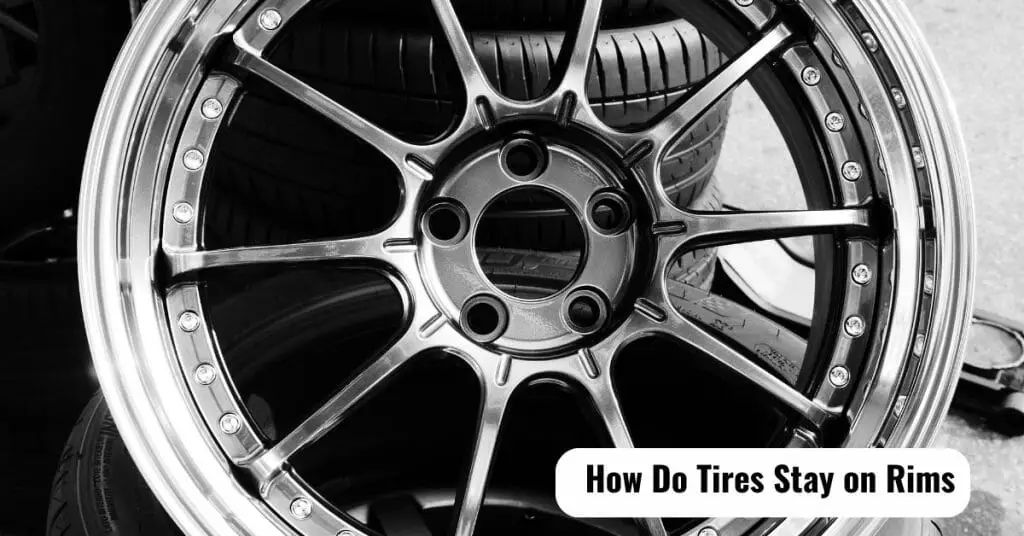
It’s a common question: how do tires stay on rims? After all, they’re just big rubber discs – why don’t they just fall off every time you go around a corner or hit a bump in the road? The answer lies in the design of both tires and rims.
Tires have what’s called a bead, which is an inner ring of steel or Kevlar that fits snugly against the rim. The bead is held in place by air pressure – as long as there’s enough air in the tire, the bead will stay seated in the rim. Rims also have a specific design that helps keep tires in place.
They have a lip that extends inward, known as the drop center. This helps to guide the tire onto the rim and keeps it from slipping off when mounted. together, these two features – the bead on tires and the drop center on rims – work to keep your tires securely mounted no matter where you go.
So next time you take your car for a spin, remember to thank your tires and rims for holding everything together!
What are Tires Made of
There’s more to a tire than meets the eye. In order to create something that can withstand thousands of pounds of pressure, heat, and friction, manufacturers have to get creative. The modern tire is made up of many different materials, each serving a specific purpose.
The first layer is the tread. This is the part of the tire that comes into contact with the road. It’s made from a variety of synthetic rubber compounds that are designed to grip the road and provide traction.
The tread also has grooves and channels cut into it to help disperse water and prevent hydroplaning. Beneath the tread is the carcass. This layer gives the tire its strength and shape.
It’s made from layers of fabric (usually steel or nylon) that are reinforcing each other. The carcass is also where you’ll find the bead this is what helps keep the tire attached to the wheel rim. Inside the carcass is another layer of synthetic rubber called the liner.
This serves two purposes: first, it prevents air from seeping out through tiny pores in the carcass; second, it provides an extra cushion between the rough carcass and smooth tread for a comfortable ride. And finally, there’s the innermost layer this one contains all of your tire’s pressure (air).
How Do Tires Work
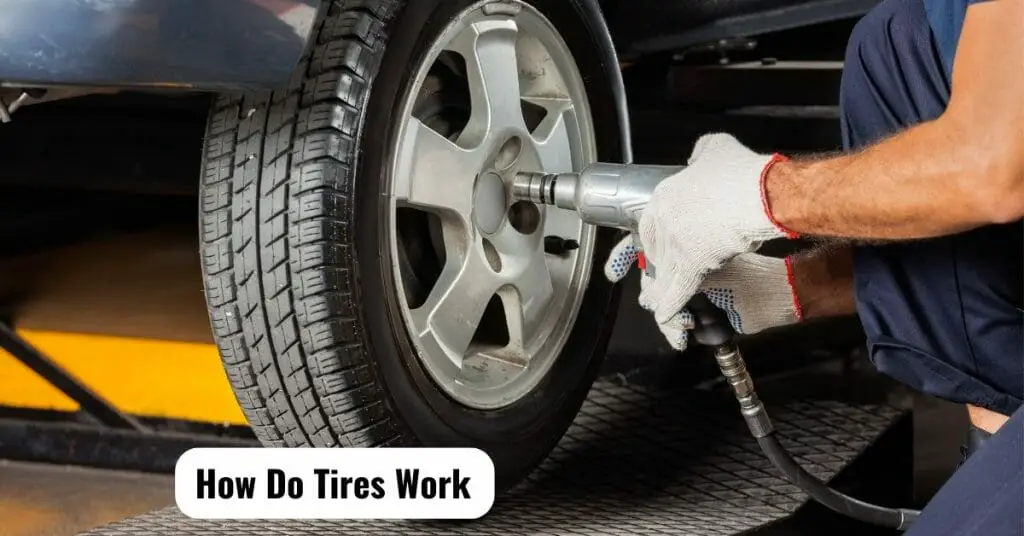
How do tires work? Tires are an essential part of a car, providing the grip and traction that allow a vehicle to move forwards. But how do they work?
Tires are made up of several different parts, all of which work together to provide the grip and cushioning that is needed when driving on roads. The tread is the part of the tire that makes contact with the ground, and it is this that provides much of the grip. The tread is made up of small grooves and patterns which help to channel water away from the surface of the tire, preventing aquaplaning.
The sidewalls are another important part of the tire, providing support and structure to the whole tire. They also play a role in absorbing shocks from bumps in the road. Finally, there is the inner liner, which is made from a rubber compound that helps to prevent air from escaping from within the tire.
So how do these different parts work together to provide grip and traction? When a car starts to move forwards, its weight shifts onto the front tires. This causes them to deform slightly as they make contact with the ground.
The deformation helps to create a ‘pocket’ of air between the ground and the tire which provides cushioning and prevents too much friction from occurring. At the same time, the tread pattern comes into contact with the ground and starts to grip it tightly. This combined effect allows a car to move forwards without slipping or skidding.
The Outermost Layer of the Tire
If you’re like most people, you probably don’t think much about the tires on your car. But did you know that there are actually three different layers to a tire? The outermost layer is called the tread, and it’s designed to provide traction and grip on the road.
Over time, the tread will begin to wear down, which can eventually lead to problems with traction and grip. That’s why it’s important to check your tires regularly for wear and tear and to replace them when necessary.
How Does a Car Tire Stay Inflate?
A car tire stays inflated because of the air pressure inside the tire. The air pressure is created by the weight of the car pressing down on the tire. The air pressure keeps the tire from being crushed by the weight of the car.
What Part of Tire Holds Air?
The air in a tire is held by the tire’s inner liner. The liner is made of a material that helps to keep the air inside the tire and prevent it from leaking out.
How Do Tires Hold Pressure?
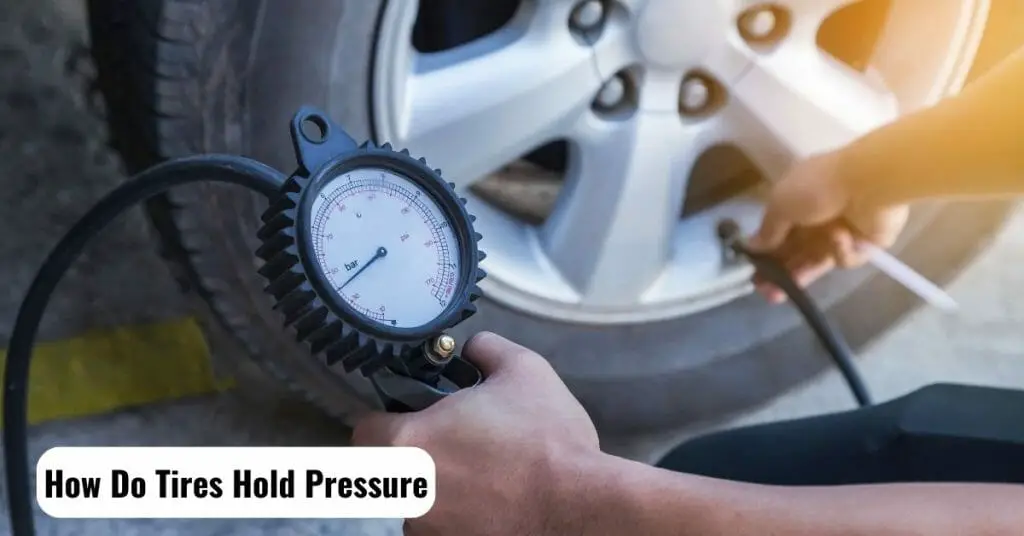
Tires hold pressure because of the air that is inside of them. The air is what gives the tire its shape and allows it to hold onto the road. When you pump air into a tire, it expands and presses against the sides of the tire. This creates a lot of force that keeps the tire from going flat.
How Does a Tire Lose Air Without a Hole?
One of the most common ways that a tire can lose air without having a hole is through what’s called “leakage.” Leakage can happen when there’s a crack or gap in the tire that’s letting air escape. It can also happen if the tire isn’t properly sealed when it’s first put on the rim.
Another way that tires lose air is through “permeation.” This happens when molecules of air slowly seep through the rubber of the tire over time. While it might not seem like a big deal to have a little bit of air leakage or permeation, it can actually cause some serious problems down the road.
For one, it can lead to uneven wear on your tires, which can shorten their lifespan and make them more likely to fail while you’re driving. If you have too much air leakage, it can also cause your tires to become underinflated, which can negatively affect how your car handles and braking performance. If you think you might have an issue with leakage or permeation in your tires, it’s important to get them checked out as soon as possible by a professional.
Frequently Ask & Questions
Why do tires hold air?
Tires hold air due to their construction and design. Tires are made up of several layers, including an inner liner, fabric belts, and a rubber outer layer. The inner liner acts as a barrier to prevent air from escaping. The fabric belts provide strength and structure to the tire, while the rubber outer layer helps to seal the air inside. When the tire is properly inflated, the air pressure pushes against the inner liner, creating a tight seal and keeping the air inside.
What causes tires to lose air?
Tires can lose air for a variety of reasons. One common cause is a puncture or damage to the tire, such as a nail or sharp object embedded in the tread. Over time, the rubber can also degrade, leading to small cracks or leaks. Additionally, changes in temperature can cause the air inside the tire to expand or contract, leading to a loss of pressure. It’s important to regularly check your tire pressure and inspect your tires for any signs of damage to prevent air loss.
How can I prevent my tires from losing air?
To prevent your tires from losing air, there are a few steps you can take. First, make sure to regularly check your tire pressure using a pressure gauge and inflate them to the recommended level. This information can usually be found in your vehicle’s owner’s manual or on a sticker inside the driver’s side door jamb. It’s also important to inspect your tires for any signs of damage, such as cracks or bulges, and have them repaired or replaced if necessary. Finally, avoid driving over sharp objects or rough terrain that could puncture or damage your tires.
How often should I check my tire pressure?
It’s recommended to check your tire pressure at least once a month. Changes in temperature and normal driving can cause your tire pressure to fluctuate, so it’s important to regularly monitor it. You should also check your tire pressure before long trips or if you notice any changes in your vehicle’s handling or fuel efficiency. If you have a tire pressure monitoring system (TPMS) in your vehicle, it will alert you if there is a significant change in pressure, but it’s still a good idea to manually check your tire pressure regularly.
Can I overinflate my tires?
Yes, it is possible to overinflate your tires. Overinflated tires can result in uneven wear, reduced traction, and a harsher ride. It can also increase the risk of a blowout, especially on hot days or when driving at high speeds. To avoid overinflating your tires, always follow the recommended tire pressure guidelines provided by the manufacturer. It’s also important to use a reliable tire pressure gauge, as relying on visual inspection alone can be misleading. If you’re unsure about the correct tire pressure for your vehicle, consult your owner’s manual or ask a professional at a tire shop for assistance.
Conclusion
Tires are one of the most important parts of a car, and they need to be properly inflated in order to work correctly. Tires hold air in them via a process called diffusion, which is when molecules move from an area of high concentration to an area of low concentration.
The molecules in the tire are constantly trying to escape through the walls of the tire, but the pressure inside the tire is greater than the atmospheric pressure outside, so they can’t escape.
This is why it’s important to check your tires regularly and make sure that they are properly inflated – if there are any leaks, air will slowly escape and eventually the tire will go flat.
How Do Tires Sizes Work – Choosing the Right Tire Size
Have you ever wondered why tires come in different sizes? What do those numbers and letters on the sidewall of your tire actually mean? Understanding tire sizes is crucial for ensuring that you purchase the right tire for your vehicle. In this blog post, we will break down how tire sizes work and what all those numbers and letters actually mean.
Tire sizes are made up of a combination of numbers and letters, and each one represents a specific characteristic of the tire. The first part of the tire size is the width, which is measured in millimeters. This number represents the distance from one sidewall to the other, when the tire is mounted on a wheel and inflated to the recommended pressure.
The second part of the tire size is the aspect ratio, which is the height of the tire’s sidewall as a percentage of its width. The third part of the tire size is the diameter of the wheel that the tire is designed to fit. This is measured in inches and represents the distance across the wheel from one sidewall to the other.
How To Read Tire Sizes | Truck Accessories Explained
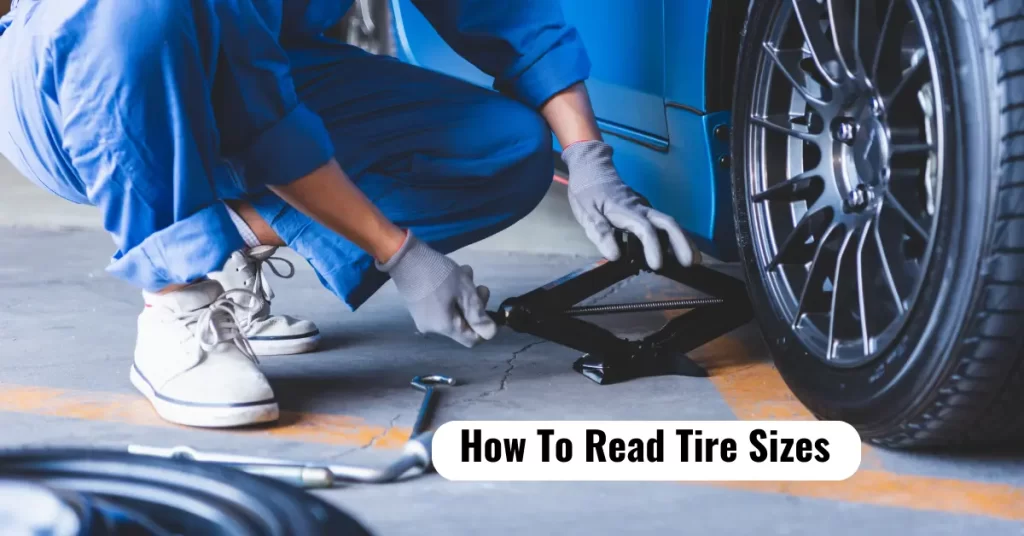
If you’ve ever gone shopping for tires, you’ve probably noticed that there are a lot of different tire sizes available. But what do all those numbers and letters mean? Here’s a quick guide to understanding tire sizes.
The first number in a tire size is the width of the tire in millimeters. The second number is the height of the sidewall, or aspect ratio. The third number is the diameter of the wheel in inches. The fourth number is the load index, or how much weight the tire can support.
The fifth letter is the speed rating, or how fast the tire can go without overheating. Now that you know a little bit more about tires sizes, you can be sure to get the right size when shopping for new tires!
How to Measure Tire Height
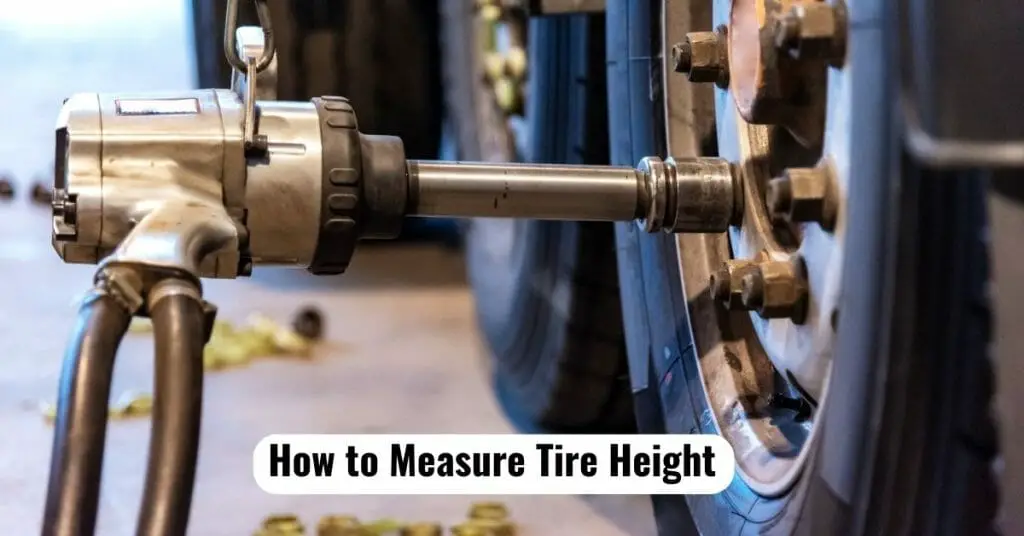
When it comes to your car, one of the most important things to keep track of is the condition of your tires. Not only do they play a role in how well your car handles, but they can also be a safety hazard if they’re not in good condition. One way to gauge the health of your tires is to measure their height.
There are a few different ways you can measure tire height, but the most accurate way is with a tire tread depth gauge. You can purchase one of these gauges at most auto parts stores. Once you have your gauge, simply insert it into the tread grooves of your tire and see where the indicator falls.
The ideal depth for most passenger car tires is between 10/32” and 11/32”. If you don’t have a tread depth gauge, you can still get an approximation of your tire’s height by using a ruler or tape measure. First, find a flat surface on which to place your tire (a table or countertop will work fine).
Then, measure from the bottom edge of the tire all the way around to the other side at its widest point. This measurement should be between 25” and 27” for most passenger car tires. Keep in mind that these measurements are just general guidelines – ultimately, it’s best to consult with a professional if you have any questions or concerns about the condition of your tires.
Tire Size Calculator
When it comes to buying new tires, one of the most important decisions you’ll make is choosing the right size. There are a number of factors to consider when making your decision, but with our tire size calculator, we make it easy. To use the calculator, simply enter your vehicle’s year, make and model.
Then select the type of tires you’re interested in. The calculator will then show you a list of recommended tire sizes, along with information on each option. Once you’ve found the perfect size for your needs, be sure to check out our selection of tires. We carry all major brands and can help you find the perfect match for your vehicle.
How to Read Tire Sizes in Inches
When it comes to reading tire sizes, there are a few things that you need to know. First off, there are two ways that tire sizes can be displayed – metric and imperial. Metric sizes are always going to be in millimeters and imperial sizes are going to be in inches.
How do you know which one you’re looking at? Well, usually the size will be displayed with the units after the numbers – for example, 225/60R16 95H would be a metric size, while P215/65R15 97T would be an imperial size. Now that you know how to identify which type of size you’re looking at, let’s go over how to read them.
For both metric and imperial sizes, the first number is going to represent the width of the tire in either millimeters or inches. The second number is going to represent the height of the sidewall as a percentage of the width – this is called the aspect ratio. The final letter(s) represent(s) the type of construction used in the tire as well as its load index and speed rating (more on that later).
As far as reading metric sizes goes, it’s pretty straightforward. For example, 225/60R16 95H means that the width of the tire is 225mm, the height of the side walls is 60% of 225mm or 135mm and the type of construction used in the tire is radial(R).
The load index of the tire is 95-which means it can carry up to 1,477lbs-and the speed rating of the tire is the maximum speed of 130mph or 210kph. When it comes to reading Imperial Tire Sizes things get a little more complicated because there are 2 different types of ways they can be displayed Inches & millimeters followed by letters Here’s an example: P215/65R15 97T.
In this case “P” means passenger car 215 is the width in millimeters that the width of the tire would be if it were measured using the International System of Units(SI). However, since we mostly use imperial units in the U.S.
What Do the 3 Numbers Mean on Tire Size
When you’re shopping for new tires, you’ll notice that each tire has a series of numbers printed on the sidewall. These numbers provide important information about the size, load capacity, and speed rating of the tire. In this blog post, we’ll decode these numbers so you can be an informed shopper when it’s time to buy new tires!
The first number in the series is the width of the tire in millimeters. The second number is the aspect ratio, which is the height of the sidewall as a percentage of the width. The third number is the wheel diameter in inches.
Finally, there will be a letter indicating the speed rating of the tire. Let’s take a look at an example: 255/45R18 97V. In this case, 255 is the width of the tire in millimeters; 45 is the aspect ratio (the sidewall height is 45% of 255mm); 18 is wheel diameter in inches; 97 indicates load capacity (970kg); and V indicates maximum speed (149mph).
Now that you know how to read tire sizes, you can be sure to choose tires that are correctly sized for your vehicle and have the right load capacity and speed rating for your driving needs.
How to Read Tire Numbers
Most people don’t know how to read tire numbers, but it’s actually quite simple. The numbers on a tire represent the width of the tire in millimeters, the height of the sidewall as a percentage of the width, and the diameter of the wheel in inches. For example, a common size for passenger cars is 205/55R16.
This means that the width of the tire is 205 mm, the height of the sidewall is 55% of 205 mm (or 113 mm), and the diameter of the wheel is 16 inches. Knowing how to read tire numbers can be helpful when you’re shopping for new tires or trying to determine what size tires will fit your car. It’s also helpful information to have if you’re troubleshooting a problem with your car’s tires.
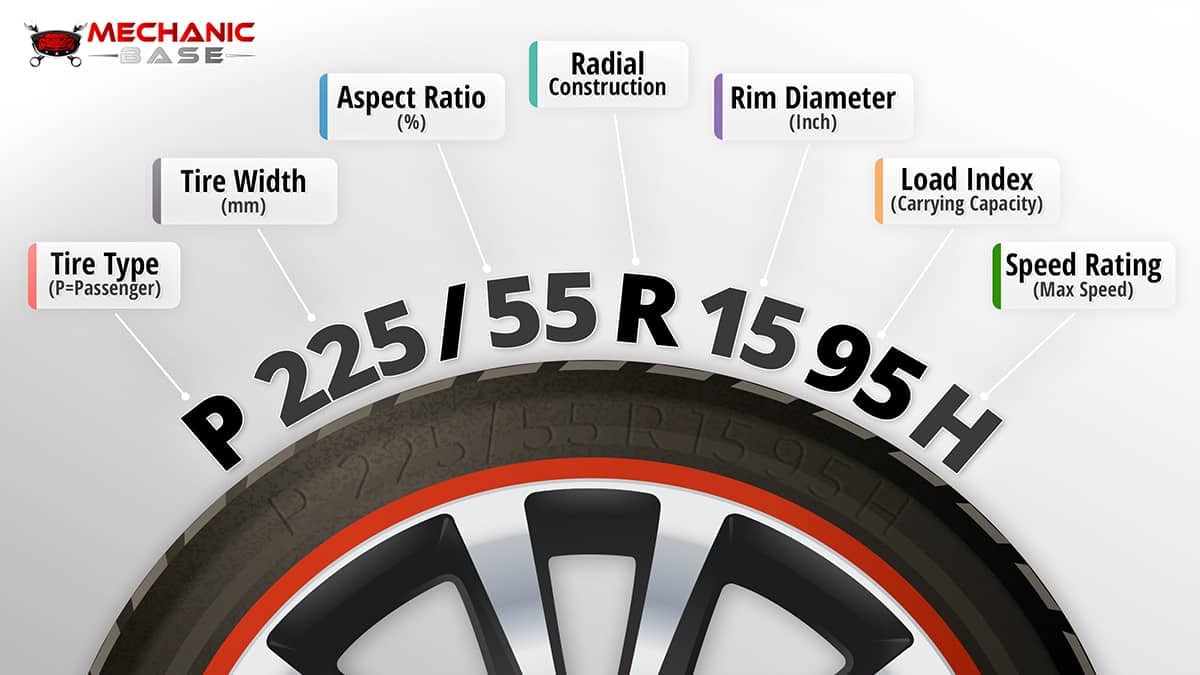
What Do the 3 Numbers on Tire Size Mean?
The three numbers on a tire’s sidewall indicate the tire’s width, aspect ratio and rim size, in that order. The width is the measurement of the tire from sidewall to sidewall in millimeters. The aspect ratio is the height of the tire’s sidewall expressed as a percentage of the width. The rim size is the diameter of the wheel that the tire is designed to fit.
What Does the 265 70R17 Mean?
265 70R17 is a common tire size designation for tires that are 17 inches in diameter with a sidewall of 265 millimeters. The “R” designates these as radial tires. The final number, “17,” is the wheel diameter that these tires are designed to fit.
What Does R17 Mean?
R17 means “recommended for 17 years and up.” It’s a rating used by the Entertainment Software Rating Board (ESRB) to indicate that a video game is suitable for players aged 17 and older. The ESRB considers many factors when assigning a game it’s rating, including but not limited to:
- The level of violence in the game
- The presence of sexual content
- The use of foul language
Do Tire Sizes Need to Be Exact?
No, tire sizes do not need to be exact. In fact, it is often better to have a slightly smaller tire than the specified size. This allows for proper clearance between the tire and the frame or suspension components. If the tire size is too large, it may rub on these components and cause damage.
Frequently Ask & Questions
How do tire sizes work, and what do the numbers and letters mean?
Tire sizes are represented by a combination of numbers and letters, such as P225/55R17. The “P” stands for passenger vehicle, indicating the tire is suitable for cars. The number 225 represents the tire’s width in millimeters, the aspect ratio of 55 indicates the tire’s height as a percentage of its width, and the letter “R” signifies it is a radial tire. Finally, the number 17 denotes the diameter of the wheel in inches. These numbers and letters collectively provide information about the tire’s dimensions.
How do I know which tire size is right for my vehicle?
To determine the right tire size for your vehicle, you can refer to your car’s owner’s manual or the tire placard located on the driver’s side door jamb or inside the fuel door. These sources will specify the recommended tire size and other important details, such as load capacity and inflation pressure. It is essential to follow the manufacturer’s guidelines to ensure optimal performance, safety, and handling of your vehicle.
Can I use a different tire size than what is recommended for my vehicle?
It is generally recommended to stick to the tire size recommended by the vehicle manufacturer. The recommended tire size takes into account factors such as handling, clearance, load capacity, and speed rating, which can impact the overall performance and safety of your vehicle. Using a different tire size can alter the speedometer accuracy, affect the handling characteristics, and potentially lead to clearance issues. If you have any doubts or want to explore other tire sizes, it’s best to consult a tire professional or the vehicle manufacturer for guidance.
What do I need to consider when choosing a different tire size for my vehicle?
If you are considering using a different tire size than the one recommended for your vehicle, there are several factors to consider. These include maintaining the overall diameter of the tire to ensure accurate speedometer readings, ensuring proper load-carrying capacity and load index, preserving adequate clearance between the tire and vehicle components, and verifying compatibility with the wheel size. It is highly recommended to consult with a knowledgeable tire professional who can guide you in selecting an appropriate tire size for your specific needs and vehicle.
How do tire sizes affect the performance of my vehicle?
Tire sizes can influence various aspects of your vehicle’s performance. Wider tires can provide increased traction and stability, especially in performance-oriented vehicles, but may impact fuel efficiency. Taller sidewalls, as indicated by the aspect ratio, can offer a smoother and more comfortable ride but may compromise precise handling. Additionally, tire sizes can affect the accuracy of the speedometer and the functionality of safety systems, such as anti-lock braking systems (ABS) and traction control. Choosing the right tire size for your vehicle involves finding a balance between performance, comfort, and safety, considering your driving preferences and the specific characteristics of your vehicle.
Conclusion
Tires are an important part of a vehicle, and their size can have a big impact on performance. But how do tire sizes work? Tire sizes are made up of a few different parts.
The first part is the width, which is measured in millimeters. The second part is the aspect ratio, which is the height of the tire compared to the width. The third part is the rim diameter, which is measured in inches.
All these parts work together to create a tire that fits your vehicle properly and provides the best performance possible. When you’re shopping for tires, it’s important to pay attention to all these factors so you can find the perfect size for your car or truck.
How Long Does Belle Tire Take to Change Tires
If you’re wondering how long Belle Tire takes to change tires, the answer is anywhere from 30 minutes to an hour. The time it takes to change a tire can vary depending on the type of vehicle you have and the number of people working on the job. Generally speaking, though, Belle Tire’s team of professional technicians can get your new tires installed quickly and efficiently.
If you’re like most people, you probably don’t think about your tires until there’s a problem. But keeping your tires in good shape is important for both safety and performance. So how often should you change them?
Belle Tire recommends changing your tires every 6 to 8 months, or as soon as you notice any wear or damage. If you live in an area with harsh weather conditions, you may need to change them more often.Changing your own tires can be a bit of a hassle, but it’s worth it to know that your car is safe and running properly.
Belle Tire makes it easy with their tire changing service. Just bring your car in and they’ll take care of the rest. In most cases, they can even do it while you wait!
Belle Tire – Tire Change Training
How Much Does Belle Tire Charge to Mount Tires
If you’re looking to get new tires mounted, Belle Tire is a great option. They offer competitive pricing and have a wide range of tire options to choose from. So how much does Belle Tire charge to mount tires?
For a standard passenger vehicle, Belle Tire charges $19.99 per tire to mount and balance them. This price includes all taxes and fees, so there are no hidden costs. If you need your tires dismounted for any reason, there is an additional fee of $10 per tire.
Belle Tire also offers a few different package deals if you’re looking to get multiple services done at once. For example, they offer a ‘Tire & Wheel Package’ which includes mounting, balancing, and installation of new valve stems for $89.99 per wheel.So whether you’re just looking to get one new tire mounted or want to take advantage of a package deal, Belle Tire has you covered.
Their competitive pricing and wide range of services make them a great choice for all your tire needs!
Does Belle Tire Patch Tires
Belle Tire is a tire company that has been in business for over 100 years. They offer a variety of services including tire patching.Tire patching is a process where a small piece of rubber is used to repair a hole or puncture in a tire.
This can be done to avoid having to replace the entire tire, which can be costly. Belle Tire offers this service at their locations across the United States.
Belle Tire Tire Rotation Cost
If you own a car, you know that eventually, you will need to get new tires. Depending on how often you drive and the type of roads you travel on, your tires can last anywhere from 25,000 to 50,000 miles. Of course, the more frequently you rotate your tires, the longer they will last.
But what does tire rotation even mean? Do all four tires need to be replaced at the same time? How much does it cost to rotate tires?
We’re here to answer all of those questions for you!First things first, let’s talk about what tire rotation is. Tire rotation is simply the act of moving your tires from one position to another.
The most common pattern is moving the front tires to the back and vice versa. This helps evenly distribute wear and tear on all four tires so they last longer. Some people also like to move their rear tires side-to-side as well.
Now that we’ve answered what tire rotation is, let’s move on to how often you should do it. The general rule of thumb is every 5,000 miles or so. However, this number can change depending on factors such as the type of car you have or driving habits (if you tend to drive aggressively or go off-roading a lot).
It’s always best to consult with your mechanic or look in your car’s owner manual for specific recommendations.Finally, we come to cost. On average, it costs between $25 and $50 dollars to have your tires rotated by a professional mechanic .
If you choose to do it yourself , it shouldn’t cost more than $20 since all you need are some basic tools and an afternoon free . So there you have it!
Does Belle Tire Rotate Tires for Free
Belle Tire is a company that specializes in tires and tire services. One of the services they offer is tire rotation. Tire rotation is the process of moving your tires from one position to another on your vehicle.
This helps to evenly distribute the wear and tear on your tires, which can extend their lifespan. Belle Tire offers free tire rotation with every purchase of new tires. They also offer a variety of other tire services, such as flat repair, alignment, and balancing.

Credit: m.yelp.com
How Long Should a Tire Change Take?
Tire changes are one of the most important maintenance tasks for keeping your car in good shape. They should be done regularly and as needed. Depending on the type of tire, they can last anywhere from 20,000 to 50,000 miles.
The average driver will need to change their tires every few years.When it’s time for a tire change, how long should it take? It depends on a few factors, such as the type of tire, the size of the tire, and whether or not you’re changing all four tires at once.
Generally speaking, though, a tire change shouldn’t take more than an hour or two.If you’re changing just one tire, it’ll likely take less time than if you’re changing all four. The reason is that when you change just one tire, you don’t have to worry about balancing the car.
Balancing is important when changing all four tires because it helps keep your car driving smoothly. With just one tire change, though, you can usually get away with not rebalancing unless the new tire is significantly different in size or weight from the old one.The other factor that will affect how long it takes to change your tires is what kind of tires you have.
If you have standard passenger car tires (P-metric), they’ll be easier to change than if you have specialty tires like those used on RVs or off-road vehicles (LT-metric). P-metric tires are relatively common and easy to find at most auto parts stores; LT-metric tires are less common and may require special ordering ahead of time.In general, though, plan on spending an hour or two to complete a full set of four tire changes – longer if you’re also having your wheels balanced at the same time!
How Long Does It Take to Install New Tires?
It generally takes about an hour to install four new tires, although the exact time will vary depending on the make and model of your vehicle. If you’re doing it yourself, you’ll need to factor in time for dismounting and mounting the tires, as well as checking the air pressure and making sure the lug nuts are tight.
How Long Does It Take to Change a Set of 4 Tires?
Assuming you have the tools and know-how, it should take about an hour to change a set of 4 tires. This includes jacking up the car, removing the old tires, putting on the new tires, and lowering the car back down. If you need to drive somewhere to get new tires first, or don’t have all the tools handy, it will obviously take longer.
How Long Does It Take to Mount And Balance 4 Tires?
It takes about an hour to mount and balance 4 tires. This includes the time it takes to dismount the old tires, mount the new tires, and balance them.
Conclusion
Belle Tire is a tire company that offers a variety of services, including tire changes. The average time it takes to change a tire at Belle Tire is 30 minutes. However, the time may vary depending on the type of vehicle and the number of tires being changed.
{ “@context”: “https://schema.org”, “@type”: “FAQPage”, “mainEntity”:[{“@type”: “Question”, “name”: “How Long Should a Tire Change Take? “, “acceptedAnswer”: { “@type”: “Answer”, “text”: ”Tire changes are one of the most important maintenance tasks for keeping your car in good shape. They should be done regularly and as needed. Depending on the type of tire, they can last anywhere from 20,000 to 50,000 miles. The average driver will need to change their tires every few years.When it’s time for a tire change, how long should it take? It depends on a few factors, such as the type of tire, the size of the tire, and whether or not you’re changing all four tires at once. Generally speaking, though, a tire change shouldn’t take more than an hour or two.If you’re changing just one tire, it’ll likely take less time than if you’re changing all four. The reason is that when you change just one tire, you don’t have to worry about balancing the car. Balancing is important when changing all four tires because it helps keep your car driving smoothly. With just one tire change, though, you can usually get away with not rebalancing unless the new tire is significantly different in size or weight from the old one.The other factor that will affect how long it takes to change your tires is what kind of tires you have. If you have standard passenger car tires (P-metric), they’ll be easier to change than if you have specialty tires like those used on RVs or off-road vehicles (LT-metric). P-metric tires are relatively common and easy to find at most auto parts stores; LT-metric tires are less common and may require special ordering ahead of time.In general, though, plan on spending an hour or two to complete a full set of four tire changes – longer if you’re also having your wheels balanced at the same time!” } } ,{“@type”: “Question”, “name”: “How Long Does It Take to Install New Tires? “, “acceptedAnswer”: { “@type”: “Answer”, “text”: ”It generally takes about an hour to install four new tires, although the exact time will vary depending on the make and model of your vehicle. If you’re doing it yourself, you’ll need to factor in time for dismounting and mounting the tires, as well as checking the air pressure and making sure the lug nuts are tight.” } } ,{“@type”: “Question”, “name”: “How Long Does It Take to Change a Set of 4 Tires? “, “acceptedAnswer”: { “@type”: “Answer”, “text”: ”Assuming you have the tools and know-how, it should take about an hour to change a set of 4 tires. This includes jacking up the car, removing the old tires, putting on the new tires, and lowering the car back down. If you need to drive somewhere to get new tires first, or don’t have all the tools handy, it will obviously take longer.” } } ,{“@type”: “Question”, “name”: “How Long Does It Take to Mount And Balance 4 Tires? “, “acceptedAnswer”: { “@type”: “Answer”, “text”: ”It takes about an hour to mount and balance 4 tires. This includes the time it takes to dismount the old tires, mount the new tires, and balance them.” } } ] }How Important is It to Have 4 Matching Tires
It’s no secret that tires are an important part of a vehicle. They provide the grip and traction necessary to keep a car on the road, and they play a big role in fuel economy. But what many drivers don’t realize is that all four tires need to be in good condition – and preferably match – in order to get the most out of their car.
When it comes to your tires, it is important to have all four match. This is because having matching tires will help with the overall performance of your vehicle. If you have two different types of tires on your car, it can cause problems with the way your car handles.
It is also important to make sure that all four of your tires are the same size. Having mismatched sizes can also cause problems with the way your car drives.

Credit: www.lesschwab.com
Do You Need All 4 Tires to Match?
Mismatched tires are often seen on vehicles, but is it really necessary to have all four tires match? The answer is no, you don’t need all four tires to match. In fact, it’s perfectly fine to mix and match tire brands as long as the tires are of the same size and tread pattern.
There are some benefits to having all four matching tires though. For one, it can help with vehicle handling since all the tires will be uniform in grip and contact patch. This is especially important if you have a high performance vehicle or one that frequently sees inclement weather driving conditions.
Additionally, having matching tires can also give your car a more “finished” look from an aesthetic standpoint.So ultimately, the decision of whether or not to have all four matching tires comes down to personal preference. If you value function over form or live in an area with mostly good driving conditions, then mismatched tires shouldn’t be an issue for you.
But if you prioritize looks or frequently drive in hazardous conditions, then it might be worth considering investing in a complete set of matching tires.
Is It Ok to Have Non Matching Tires?
It’s not ideal to have non-matching tires, but it’s not the end of the world if it happens. Here are a few things to keep in mind if you find yourself in this situation:1. Uneven tread wear.
If your tires are of different brands or sizes, they will likely wear down at different rates. This can lead to uneven tread wear, which is not ideal for traction or safety.2. Different handling characteristics.
Tires of different brands or sizes can also handle differently on the road. This can make your car feel less stable and predictable, so it’s important to be aware of this if you’re driving with mismatched tires.3. Reduced tire life span.
When tires are mismatched, they tend to not last as long as they would if they were all the same brand and size. This is because each tire is working slightly differently than the others, which puts additional stress on them over time.
Is It Better to Buy 2 Or 4 Tires?
It really depends on a few factors, such as the condition of your current tires, the driving conditions where you live, and your budget. Here are a few things to consider when making the decision to buy 2 or 4 new tires:If your current tires are in good condition and have plenty of tread left, you may only need to replace two.
This is especially true if you live in an area with mild weather conditions.On the other hand, if your current tires are worn down or if you live in an area with harsher winter weather conditions, it’s probably best to replace all four tires. This will ensure that all four wheels have good traction and can handle different types of terrain equally well.
Another factor to consider is cost. Replacing just two tires may be more affordable than replacing all four at once. However, keep in mind that buying two new tires now means you’ll likely have to buy another pair soon (within a year or so).
So, while it may be cheaper upfront to only buy two new tires, it could end up costing more in the long run.Ultimately, the decision of whether to buy 2 or 4 new tires comes down to personal preference and your specific circumstances. If you’re not sure what’s best for your situation, consult with a qualified mechanic or tire specialist who can help you make an informed decision based on your needs and budget.
Is It Ok to Have One Tire Different?
It’s perfectly fine to have one tire different from the other three, as long as it’s the same size and type of tire. This is because sometimes people will accidentally buy two different types of tires, or they’ll get a flat and have to replace just one tire. As long as the spare tire is the same size, there shouldn’t be any problems.
Is it OK to Mix Tire Brands and Tread Patterns on a Vehicle?
Do All 4 Tires Need to Be the Same Brand
It’s a common question: do all four tires need to be the same brand? The answer is no, you don’t need to have all four tires be the same brand. However, it is recommended that you have all four tires be the same type.
For example, if you have two winter tires and two all-season tires, it’s best to replace both of the winter tires so that they match. This will provide the best possible traction and handling for your vehicle.
Running Different Tyres Front And Rear
Many people don’t realize that there are benefits to running different tyres front and rear. Here are some things to consider:1. Different tyres wear at different rates.
So, if you have a tyre that is starting to show signs of wear on the front, but the rear is still in good condition, then you can rotate them and get more life out of both tyres.2. Different tyres also have different tread patterns. This can be beneficial in terms of grip and traction, especially in wet or icy conditions.
3. Some people find that running different tyres gives them a better balance in terms of handling and braking. Again, this comes down to personal preference but it’s something worth considering.4. Finally, it’s worth noting that running different tyres front and rear can sometimes be cheaper than buying two identical tyres!
Do My Front Tires Have to Match the Rear
Most people believe that all four of their tires must match, but this isn’t always the case. In fact, there are many benefits to having different types of tires on your front and rear axle. Here’s a look at why you might want to consider mismatched tires:
1. improved traction – Having different tread patterns on your front and rear tires can improve your traction in both dry and wet conditions. The more aggressive tread pattern on the rear tires will help dig into the pavement, while the smoother front tires will provide better contact with the road.2. increased longevity – Another benefit of mismatched tires is that they tend to last longer.
This is because the different tread patterns distribute wear evenly across all four tires, instead of concentrating it on just two. As a result, you won’t have to replace your tires as often, which can save you money in the long run.3. better handling – Mismatched tires can also improve your car’s handling characteristics.
The different tread patterns provide different levels of grip, which can make turning and braking easier and more precise.If you’re considering mismatched tires for your car, be sure to consult with a professional to ensure that they’re compatible with your vehicle and driving style.
Do All 4 Tires Need to Be the Same Brand Reddit
When it comes to your car, there are a lot of things that you can be brand loyal to and there are some things where it doesn’t really matter. When it comes to tires, there is a lot of debate on whether or not all 4 tires need to be the same brand. There are a few different schools of thought on this matter.
Some people believe that it is necessary to have all 4 tires be the same brand in order for your car to perform optimally. The thinking behind this is that each tire company has their own unique formula for their tires and if you mix and match brands, you could potentially throw off the balance of your car. Another reason why some people believe that all 4 tires should be the same brand is for warranty purposes.
If you have a problem with one tire, most companies will only replace it if all 4 tires are the same brand.There are also people who believe that as long as the 4 tires are comparable in terms of quality, size, and tread life, then it doesn’t really matter what brand they are. This school of thought believes that as long as the 4 tires work well together, then that’s all that matters.
At the end of the day, it’s up to you to decide what you want to do with your car. If you feel more comfortable having all 4 tires be the same brand, then go for it. But if you don’t think it really matters, then don’t worry about it too much.
Conclusion
It’s important to have four matching tires on your car for a few different reasons. First, it helps with gas mileage. Second, it provides even traction and handling.
Third, it decreases wear and tear on the tires themselves. Fourth, it looks better aesthetically. Ultimately, it’s up to the driver to decide whether or not having four matching tires is a priority.
How Do You Know What Tire Pressure Should Be
There are a few different ways that you can figure out what your tire pressure should be. The first way is to look in your car’s owner’s manual. This will have the specific information for your car.
Another way to find out is to look at the sticker on the driver’s side doorjamb. This sticker will have the recommended tire pressure for your car. You can also find this information online or in a phone app.
What is the Proper Tire Pressure?
If you’ve ever wondered how to know what tire pressure should be, you’re not alone. It’s a common question, and one that has a few different answers. Here’s a look at how to determine the right tire pressure for your vehicle.
There are a few different ways to know what tire pressure should be. One is to check the owner’s manual for your specific vehicle make and model. The other is to look for the recommended tire pressure on the placard that’s located on the driver’s doorjamb or inside the glove compartment.
Once you know what the recommended tire pressure is, there are a few things to keep in mind. First, it’s important to check your tires when they’re cold – meaning before you’ve driven them for at least three hours. This will give you an accurate reading of the air pressure in your tires.
Second, always inflate or deflate your tires slowly and evenly to avoid damaging them.With these tips in mind, you’ll be able to easily determine what tire pressure should be for your vehicle – ensuring a safe and comfortable ride!
What Should Your Tire Pressure Be in the Summer?
As the weather gets warmer and the days get longer, many of us start thinking about summer road trips. Before you hit the open road, it’s important to make sure your vehicle is in good condition – and that includes having the right tire pressure.So what should your tire pressure be in the summer?
The answer may surprise you.Most experts agree that you should actually reduce your tire pressure in the summer months. That’s because as temperatures rise, so does the air pressure inside your tires.
If you don’t let some of that air out, your tires could become overinflated and at risk for a blowout. On the other hand, if you let too much air out, your tires could become underinflated and cause uneven wear.The best way to avoid these problems is to check your tire pressure regularly and adjust as needed.
You can find the recommended tire pressure for your vehicle in the owner’s manual or on a sticker inside the driver’s door panel. Once you know what it should be, use a digital Tire Pressure Gauge to check each tire (including the spare) and add or release air as needed to reach that number.
What Should My Tire Pressure Be
Your car’s tires are one of the most important parts of the vehicle, and keeping them inflated to the proper pressure is essential for both safety and performance. But what is the right tire pressure for your car?There are a few things to keep in mind when checking and inflating your tires.
First, consult your owner’s manual. Every car is different, and the manufacturer will have specific recommendations for tire pressure.Next, check the sidewall of your tires.
You’ll see a number followed by “PSI.” This is the maximum amount of air pressure that should be in your tires. Don’t exceed this number when inflating your tires.
Finally, consider the conditions you’ll be driving in. If you’re going to be on rough roads or in cold weather, you may want to slightly inflate your tires above the recommended level to account for these factors. Conversely, if you’ll be mostly driving on smooth highways in warm weather, you may be able to get away with slightly less air pressure than what’s recommended.
As a general rule of thumb, aim for 32 PSI in your tires if possible. This is a good all-around number that should work well in most conditions. However, again, consult your owner’s manual first and make adjustments based on the specific recommendations for your car as well as current driving conditions.
Is 40 Psi Good Tire Pressure
If you’re wondering whether 40 PSI is a good tire pressure, the answer is: it depends. The ideal tire pressure for your car will vary depending on the make and model of your vehicle, as well as the type of tires you’re using. However, in general, most passenger cars will perform best with a tire pressure between 30-35 PSI.
So if you’re running at 40 PSI, you may be overinflating your tires slightly. This can lead to a rougher ride and decreased fuel efficiency.Of course, there are always exceptions to the rule.
If you frequently drive on rough roads or in off-road conditions, you may want to increase your tire pressure slightly to help prevent flats and other damage. And if you find that your car handles better at higher pressures, by all means go ahead and experiment until you find the sweet spot. Just remember that safety should always be your top priority – so don’t go too crazy with the air compressor!
Tire Pressure Calculator
It’s important to keep your tires properly inflated. Underinflated tires can lead to decreased fuel efficiency and increased wear and tear on the treads. Use this tire pressure calculator to find the ideal pressure for your car’s tires, based on the manufacturer’s recommendations.
Simply enter your vehicle make, model, and year, and the desired cold inflation pressure for the front and rear tires. The calculator will then provide you with the minimum and maximum allowable pressures for your car’s tires.
Best Tire Pressure for Ride Quality
Ride quality is one of the most important aspects to consider when choosing tires for your car. The right tire pressure can make a big difference in how your car handles on the road. Here are some tips to help you choose the best tire pressure for ride quality:
The first thing to consider is the type of tires you have. If you have standard passenger car tires, then you’ll want to maintain a tire pressure of around 32 psi. This is the ideal pressure for these types of tires and will provide a smooth ride.
For performance or summer tires, you may want to increase the pressure slightly to around 35 psi. This will help improve handling and grip on the road.Another factor to consider is the weight of your car.
Heavier cars will require higher pressures in order to achieve optimal performance. For example, if you have a sports car that weighs 3,000 pounds or more, you’ll want to inflate your tires to at least 36 psi. On the other hand, if you have a smaller sedan that weighs 2,500 pounds or less, 32 psi should be sufficient.
Finally, take into account your driving habits when determining the best tire pressure for ride quality. If you frequently drive on rough roads or in stop-and-go traffic, you’ll want lower pressures in order to absorb shocks better and minimize wear and tear on your tires. Conversely, if you mostly drive on highways or smooth surfaces, higher pressures will give you a smoother ride with less rolling resistance.
Keep these factors in mind when choosing tire pressure for ride quality and safety reasons!

Credit: evanstire.com
How Do I Know What Tire Pressure to Fill?
If you’re like most people, you probably don’t give much thought to your tires beyond making sure they have enough air in them. But if you want to get the most out of your tires and improve your gas mileage, it’s worth taking a few minutes to learn about tire pressure and how to properly inflate your tires.Tire pressure is measured in pounds per square inch (psi).
The recommended tire pressure for your car can be found on a placard on the driver’s side doorjamb or in your owner’s manual. Don’t rely on the maximum psi listed on the tire itself; that’s the maximum pressure the tire can safely hold, not the ideal pressure for fuel efficiency or long tread life.Inflating your tires to the proper pressure is easy and only takes a few minutes.
You’ll need an air compressor or a hand-held air pump, as well as a tire gauge (most air compressors have one built-in). Once you’ve located your recommended psi, check each of your tires with the gauge and add air until they reach that level. If one of your tires is significantly low – 20 percent or more below the recommended psi – then you may have a slow leak and will need to take it to a mechanic to be repaired.
Topping off your tires once a month – either at home or when you get gas – only takes a few minutes but can make a big difference in how efficiently your car runs and how long your tires last.
Is 40 Psi Too High for Tires?
No, 40 PSI is not too high for tires. In fact, most tires require at least 32 PSI to be properly inflated. Overinflating your tires can actually cause them to wear out faster and may make them more susceptible to punctures.
Should All 4 Tires Have the Same Psi?
Most vehicles will have the same psi rating for all four tires, but there are a few exceptions. When it comes to deciding what psi to put in your tires, you should always consult your car’s owner’s manual first and foremost.The psi rating is the amount of air pressure that is needed to support the load that the tire is rated for.
In most cases, all four tires on a car will have the same psi rating. This ensures that the car handles evenly and predictably on all four corners.There are some cases where having different psi ratings for different tires may be beneficial.
For example, if you have a front-wheel drive car with a lot of weight over the front wheels, you may want to increase the psi in the front tires by a few pounds to help with traction and handling.Ultimately, it is up to you to decide what works best for your vehicle based on its specific needs. If you are ever unsure, always err on the side of caution and go with what is recommended in your owner’s manual.
Conclusion
If you’re like most people, you probably don’t think much about your car’s tires – until there’s a problem. Then, all of a sudden, you need to know everything about them! One question that often comes up is, “How do I know what tire pressure should be?”
The answer is actually quite simple. Your car’s owner’s manual will have the recommended tire pressure for your specific vehicle. You can also usually find this information on a sticker inside the driver’s door or on the fuel door.
If you can’t find it there, a quick Google search should turn up the info you need.Once you know the recommended tire pressure for your car, check your tires’ pressure at least once a month (preferably when they’re cold). You can buy an inexpensive tire gauge at most auto parts stores.
Simply remove the valve cap and press the gauge onto the valve stem to get a reading.If your tires are low on air, use an air compressor (also available at auto parts stores) to add more air until they reach the proper pressure. Don’t forget to put the valve caps back on when you’re finished!
How to Add Weight to Tractor Tires
Adding weight to tractor tires is a common practice among farmers and agricultural workers. There are several reasons for this, the most common being to increase traction. This is especially important in wet or icy conditions.
Adding weight can also help reduce compaction of the soil.There are a few different ways to add weight to tractor tires. The most common method is to use tire chains.
Tire chains can be purchased at most farm supply stores or online. They typically come in two sizes, standard and heavy duty. Standard chains are sufficient for most applications, but heavy duty chains may be needed if you are adding a lot of weight to the tires or if you will be using the tractor in extreme conditions.
Adding Weight to Your Garden Tractor Tires | How to Add Liquid Ballast Lawn & Garden Tractor Tires
- inflated the tractor tire to the correct psi 2
- Weighed the tire on a scale 3
- Added weight to the inside of the tire until it reached the desired weight 4
- Inflated the tire back up to the correct psi
Tractor Ballast Weight Calculator
If you’re a farmer, then you know how important it is to have the right tractor ballast weight. After all, this can make the difference between a successful harvest and a failed one. Fortunately, there are now tractor ballast weight calculators available online that can help you determine the perfect weight for your needs.
One of the most popular ballast weight calculators is the Tractor Ballast Weight Calculator from John Deere. This helpful tool allows you to input your tractor’s make, model and year, as well as the type of terrain you’ll be working on. Once you’ve done that, it will provide you with an estimate of the ideal ballast weight for your tractor.
Another great option is the AgriCharts Ballast Weight Calculator . This one is slightly different in that it asks for your tractor’s PTO horsepower rating instead of its make and model. However, it will still give you an accurate estimate of the ideal ballast weight for your machine.
No matter which calculator you use, be sure to double-check your results with a trusted dealer or mechanic before making any changes to your tractor’s ballast weights. And always remember: when in doubt, err on the side of caution by carrying more rather than less ballast weight.
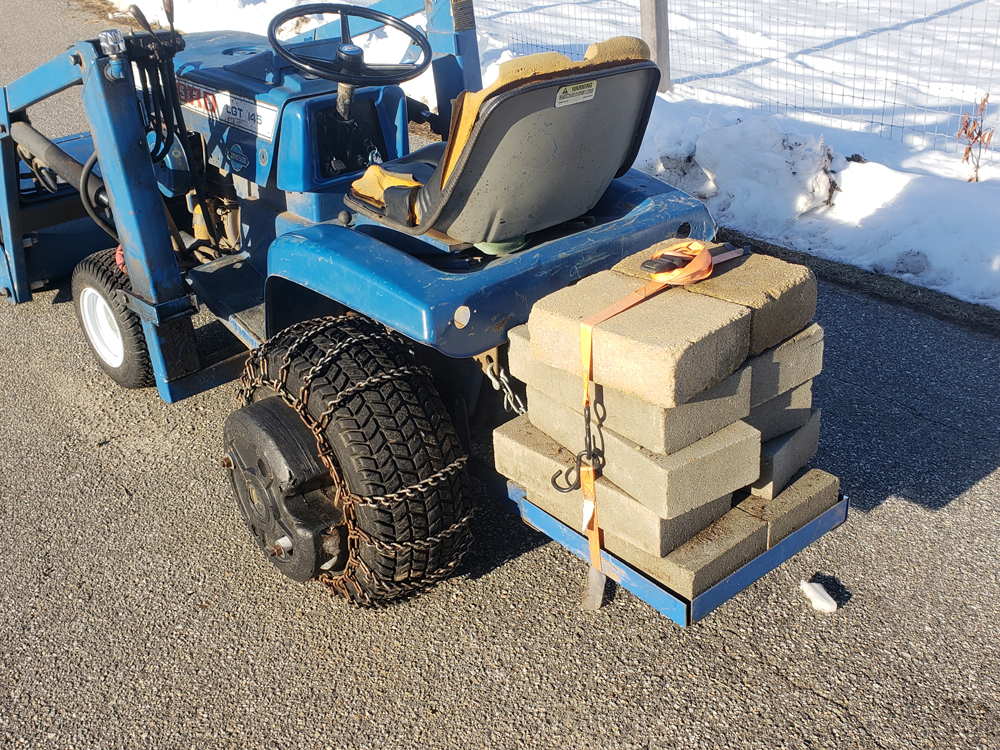
Credit: isavetractors.com
What Can I Put in My Tractor Tires for Weight?
If you’re looking to add weight to your tractor tires, there are a few options available. One popular choice is to fill the tires with sand. This can be done by either pouring the sand directly into the tire, or by using a tube to funnel the sand into the tire.
Another option is to fill the tires with water. This is typically done by using a hose to fill the tire up with water until it’s full. Yet another option is to use wheel weights.
These are weights that are specifically designed to be added to the outside of a wheel in order to add weight.
How Do I Add Weight to the Back of My Tractor?
There are a few ways that you can add weight to the back of your tractor in order to achieve better traction and stability. One method is to simply attach weights to the rear hitch of your tractor. This could be in the form of chains or bars that are specially designed for this purpose, or even concrete blocks that can be easily secured.
Another way to add weight is by installing a weight box on the back of your tractor. This is basically a metal box that can be filled with sand, gravel, or even water, and it will help to provide extra traction and stability when working on slippery or uneven surfaces.
How Much Weight Does Filling Tractor Tires Add?
Most tractor tires weigh between 500 and 1,000 pounds when they are fully inflated. The weight of the tire will depend on the size and type of tire. For example, a 12-inch by 38-inch rear tractor tire can weigh up to 850 pounds.
A 18-inch by 34-inch front tractor tire can weigh as much as 1,200 pounds.
How Do You Put Weight on a Garden Tractor Tire?
One of the most common ways to add weight to a garden tractor tire is by using agricultural weights. Agricultural weights are made specifically for this purpose and can be found at most farm supply stores. Another option is to use cinder blocks or other heavy objects that can be placed on the tire.
Whatever method you choose, make sure that the weight is evenly distributed around the circumference of the tire so as not to cause any damage or uneven wear.
Conclusion
One way to add weight to tractor tires is by filling them with a substance such as sand or water. This will help increase the traction of the tires on the ground, which can be helpful in certain situations. Another way to add weight to tractor tires is by attaching weights to the outside of the tires.
This can be done using chains or straps, and is typically used when more weight is needed than what can be added by filling the tires alone. Adding weight to tractor tires can help improve traction and performance, and is something that should be considered if you are having trouble with your tractor slipping or sliding.
How Long Does Discount Tire Take to Change Tires
Discount Tire is one of the largest tire retailers in the United States. They offer a wide variety of tires and services, including tire installation. So, how long does Discount Tire take to change tires?
The answer depends on a few factors, such as the type of tire you’re having installed and whether or not you need an alignment. Generally speaking, though, the process shouldn’t take more than an hour or so.
Discount Tire is one of the most popular places to go to get your tires changed. They are known for their quick and easy service. However, many people wonder how long it actually takes to get your tires changed at Discount Tire.
The answer may surprise you!It turns out that Discount Tire can actually change your tires very quickly. In fact, they can usually do it in less than an hour!
This is a huge benefit if you need to get your car back on the road as soon as possible.Of course, the time it takes to change your tires will vary depending on a few factors. For example, if you have a lot of tire damage, it may take longer to fix everything up.
Additionally, if you have a lot of wheels, it will also take longer to change all of them.Overall, though, Discount Tire is one of the fastest places to get your tires changed. So if you’re in a bind and need new tires ASAP, be sure to head over there!
When to Replace Tires | Discount Tire
How Long Does Discount Tire Take to Change Tires Reddit
If you’re looking to get new tires, you may be wondering how long the process will take. Discount Tire is a popular choice for many people, so let’s take a look at how long it typically takes to have tires changed there.The first thing to keep in mind is that Discount Tire does not do same-day service.
So if you need your tires changed urgently, you’ll need to go somewhere else. However, Discount Tire typically only takes a few hours to change tires.The exact time will depend on how busy they are and how many people are ahead of you.
But generally speaking, it shouldn’t take more than a few hours from start to finish. So if you can afford to wait a day or two, Discount Tire is a great option.
How Long Does It Take to Change 4 Tires at Discount Tire
Discount Tire is one of the largest tire and wheel retailers in the United States. They have over 1,000 locations across 34 states. Discount Tire offers a variety of services including tire installation, wheel alignment, and more.
One of the most common questions Discount Tire customers ask is, “How long does it take to change 4 tires at Discount Tire?” The answer may surprise you – it only takes about 20-30 minutes! That’s right – changing all four tires at Discount Tire can be done in less time than it would take you to get your oil changed.
Of course, the time it takes to change your tires will vary depending on a few factors. The type of vehicle you have will play a role in how long it takes. Larger vehicles with more wheels may take a bit longer.
Additionally, if you need any additional services like a tire rotation or balance, that will add a few extra minutes to your total time.So next time you’re thinking about getting new tires, remember that Discount Tire can get the job done quickly and efficiently. No need to spend hours at the dealership or auto shop – 20-30 minutes is all it takes!
Discount Tire Appointment Policy
If you’re looking to get new tires, or even just get your old ones serviced, you’ll need to make an appointment at Discount Tire. Here’s everything you need to know about their scheduling policy.Discount Tire operates on a first-come, first-serve basis.
This means that the earliest appointments will be given priority over later ones. You can make an appointment online or over the phone, but keep in mind that there may be a waitlist for popular timeslots.Once you’ve made your appointment, be sure to arrive on time.
If you’re more than 15 minutes late, your spot may be given away to someone else. And if you need to cancel or reschedule, try to do so at least 24 hours in advance; otherwise, you may be charged a $50 fee.At your appointment, a technician will inspect your tires and recommend any services that are needed.
They’ll also give you an estimate of how long the work will take and what it will cost. Once you’ve approved the work, they’ll get started right away!
Does Discount Tire Change Tires for Free
Discount Tire is one of the leading tire retailers in the United States. They offer a variety of services, including tire changing and repair. Many people are wondering, does Discount Tire change tires for free?
The answer is no, Discount Tire does not change tires for free. However, they do offer a competitively priced tire changing service. Their prices start at $15 per tire for basic services.
This includes things like removing the old tire, installing the new tire, and properly inflating it. Discount Tire also offers additional services such as balancing and alignment starting at $20 per tire.Overall, Discount Tire’s prices are very reasonable when compared to other places that change tires.
If you need your tires changed and don’t want to do it yourself, then Discount Tire is a great option to consider.

Credit: www.discounttire.com
How Long Does It Take to Get 4 New Tires?
It typically takes around an hour to get four new tires. This includes the time it takes to remove the old tires, install the new ones, and properly inflate them.
How Long Does It Take to Get Your Tires Changes?
It takes about 15-20 minutes to change a tire.
Conclusion
Discount Tire is a large tire retailer that offers a variety of services, including tire changes. While the company does not have an exact time frame for how long it takes to change a tire, it typically takes between 30 and 45 minutes. Discount Tire also offers other services such as oil changes and alignment, which can take additional time.
{ “@context”: “https://schema.org”, “@type”: “FAQPage”, “mainEntity”:[{“@type”: “Question”, “name”: “How Long Does It Take to Get 4 New Tires? “, “acceptedAnswer”: { “@type”: “Answer”, “text”: ”It typically takes around an hour to get four new tires. This includes the time it takes to remove the old tires, install the new ones, and properly inflate them.” } } ,{“@type”: “Question”, “name”: “How Long Does It Take to Get Your Tires Changes? “, “acceptedAnswer”: { “@type”: “Answer”, “text”: ”It takes about 15-20 minutes to change a tire.” } } ] }

![How Long Does It Take to Change Tires off Rims [Updated] How Long Does It Take to Change Tires off Rims [Updated]](https://tirehubz.com/wp-content/uploads/2022/09/438ca18ffab04fb7a033480b033ff589-1020x510.jpg)
